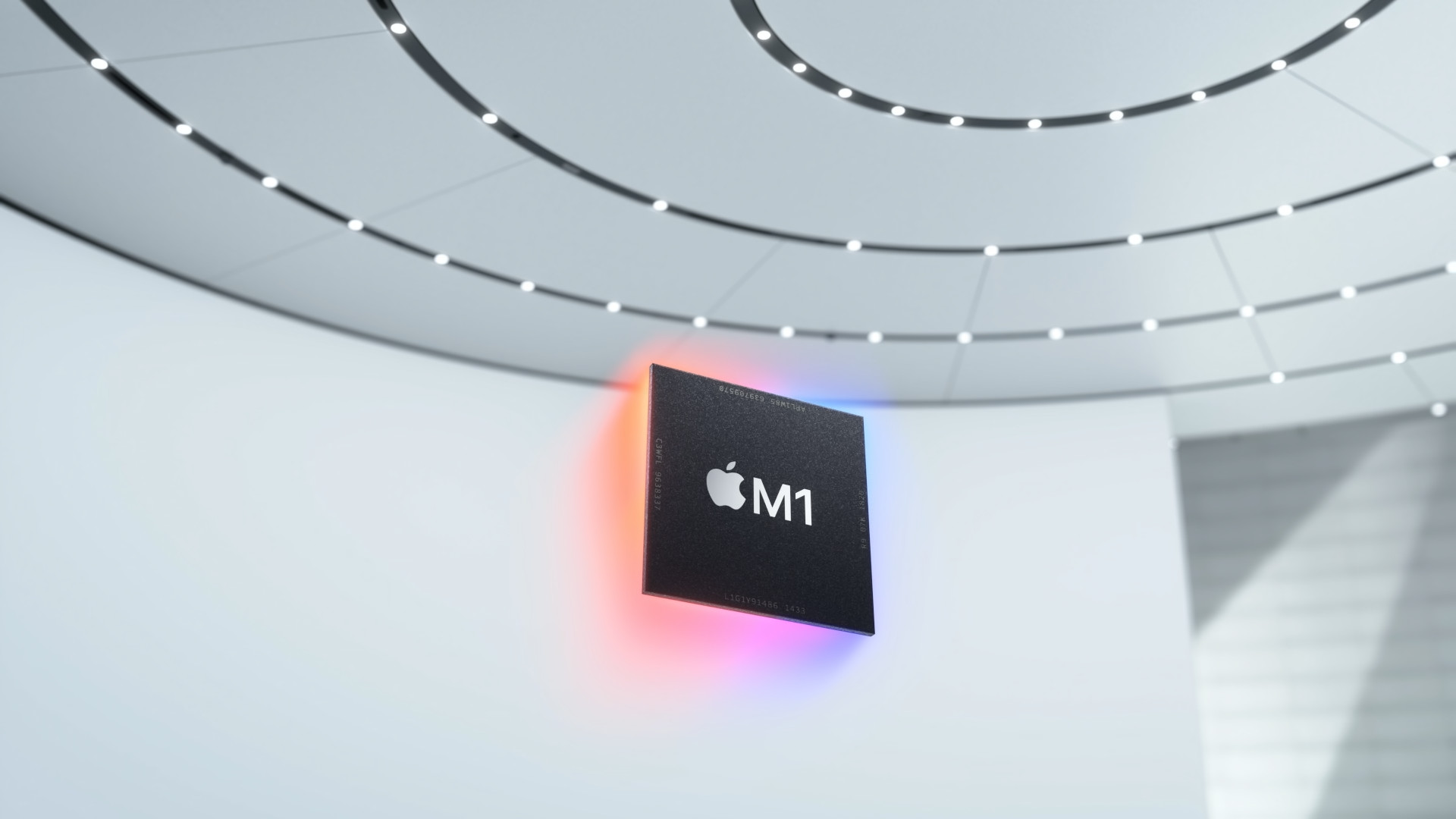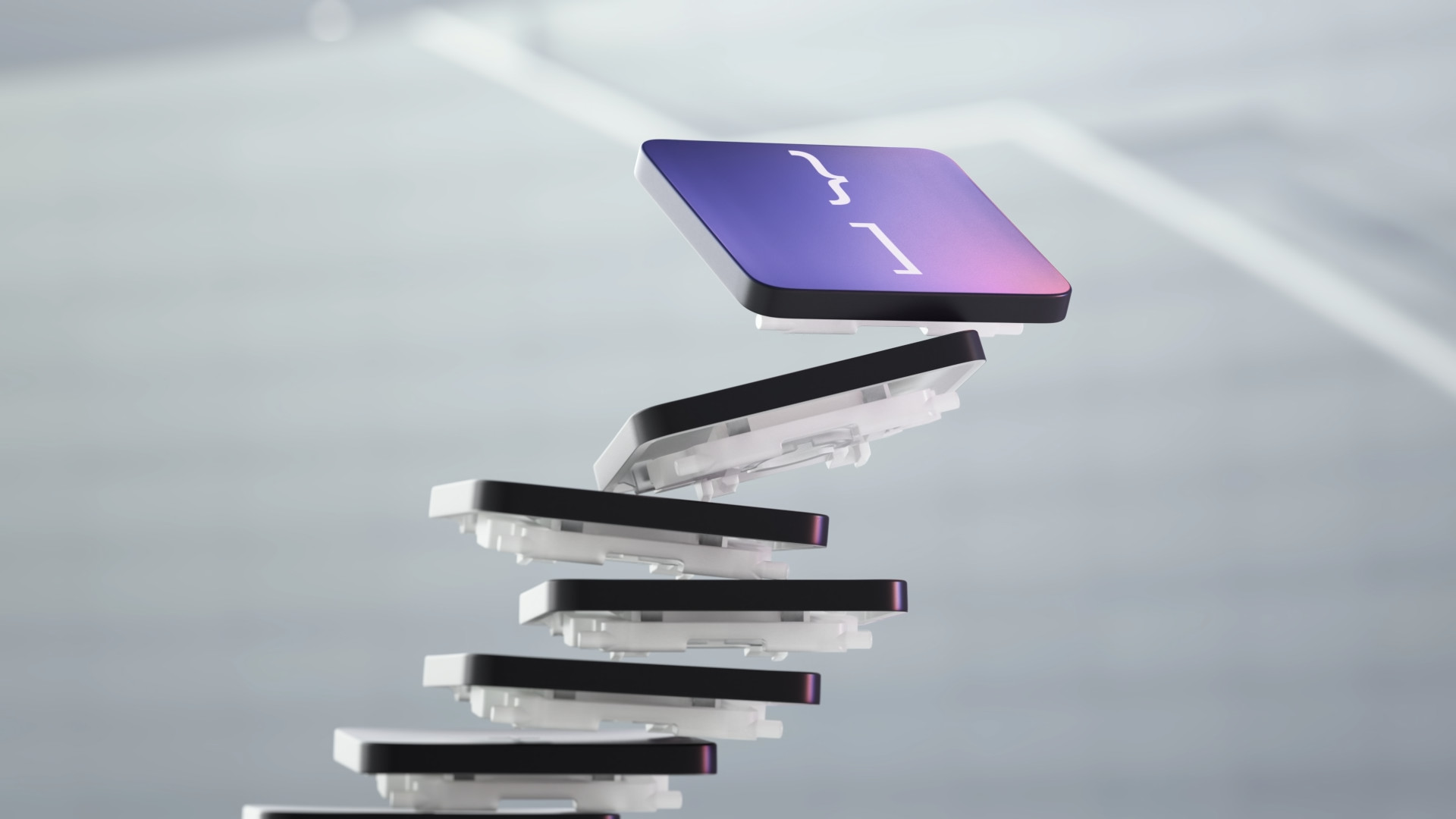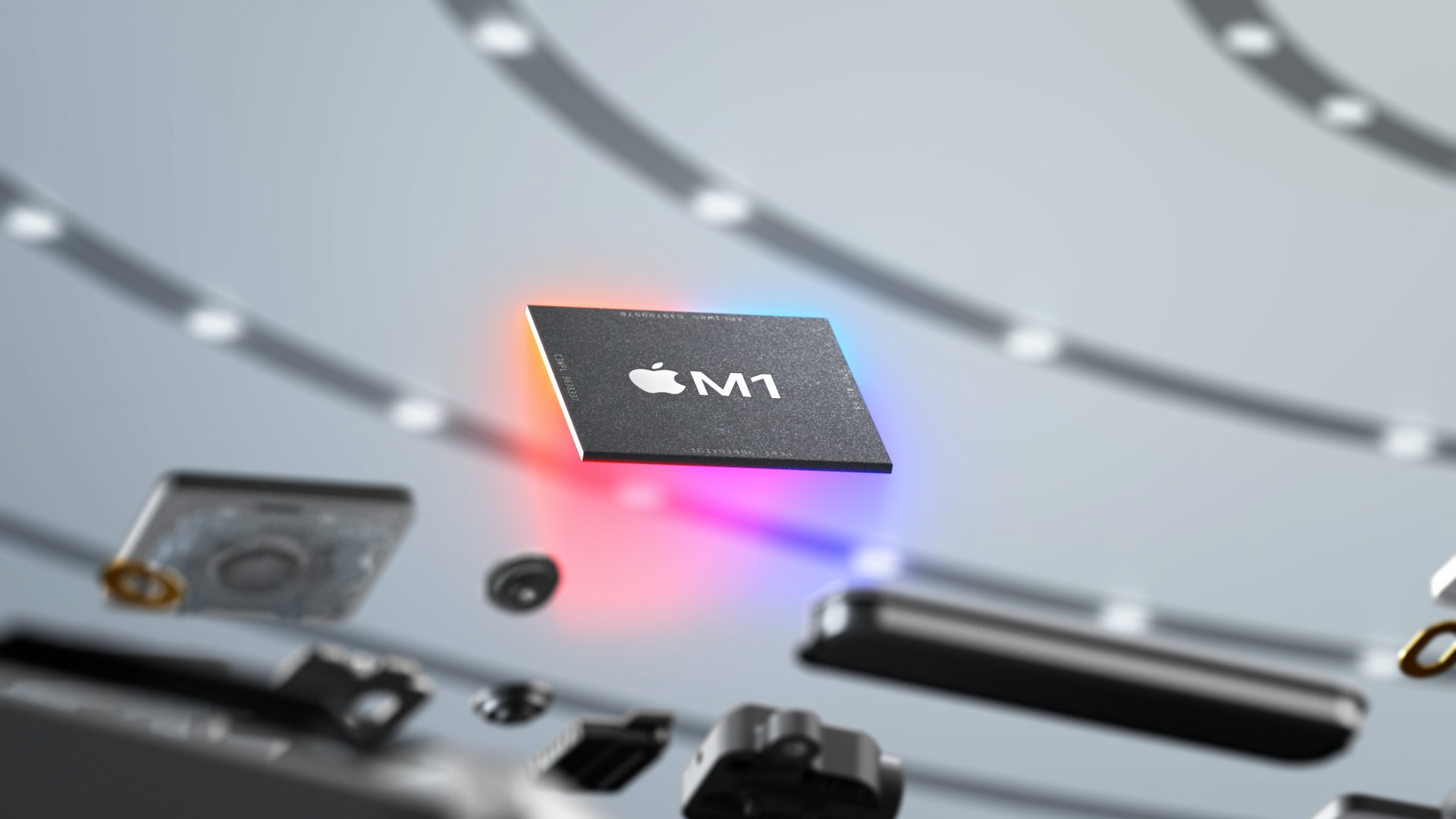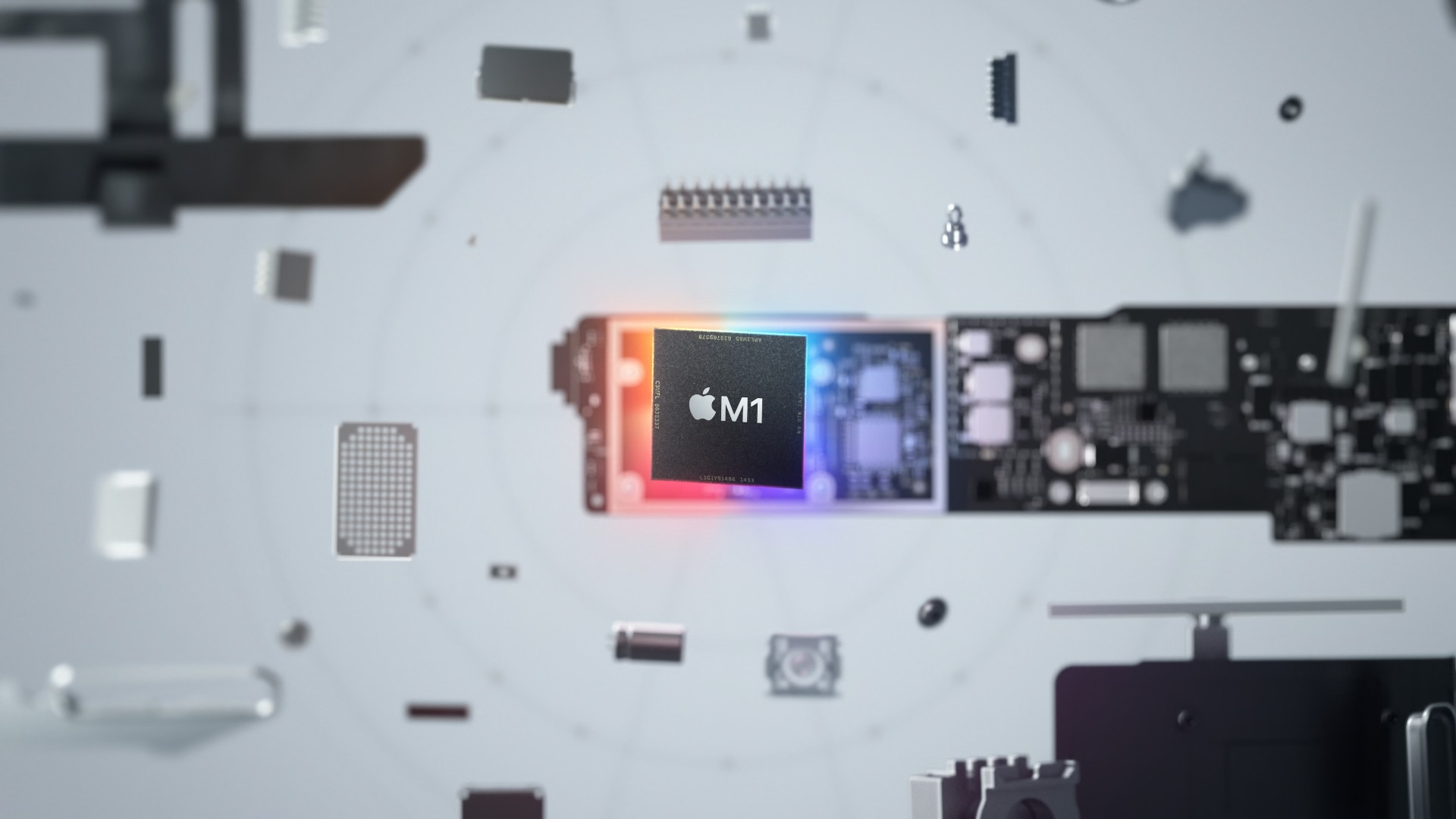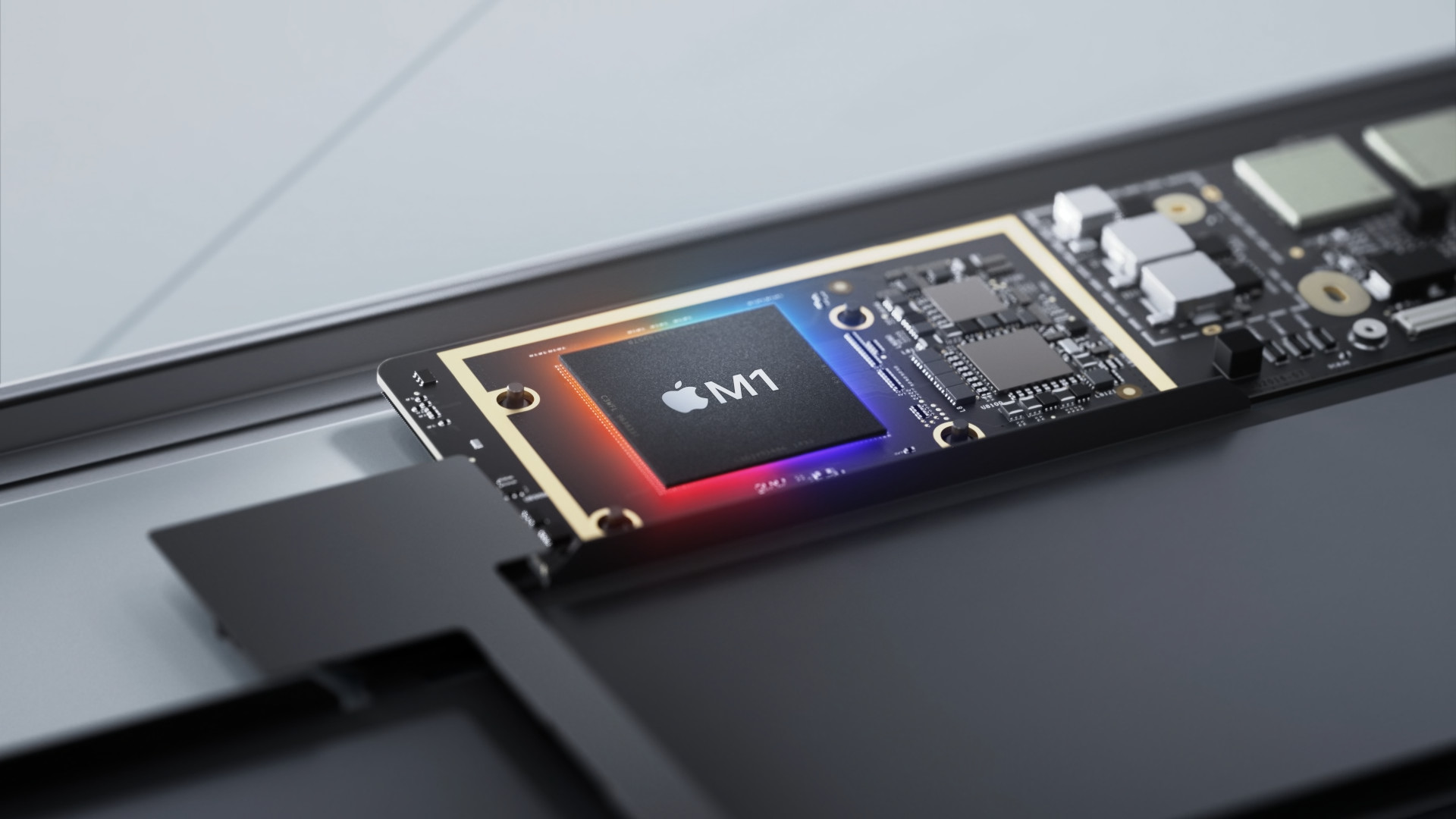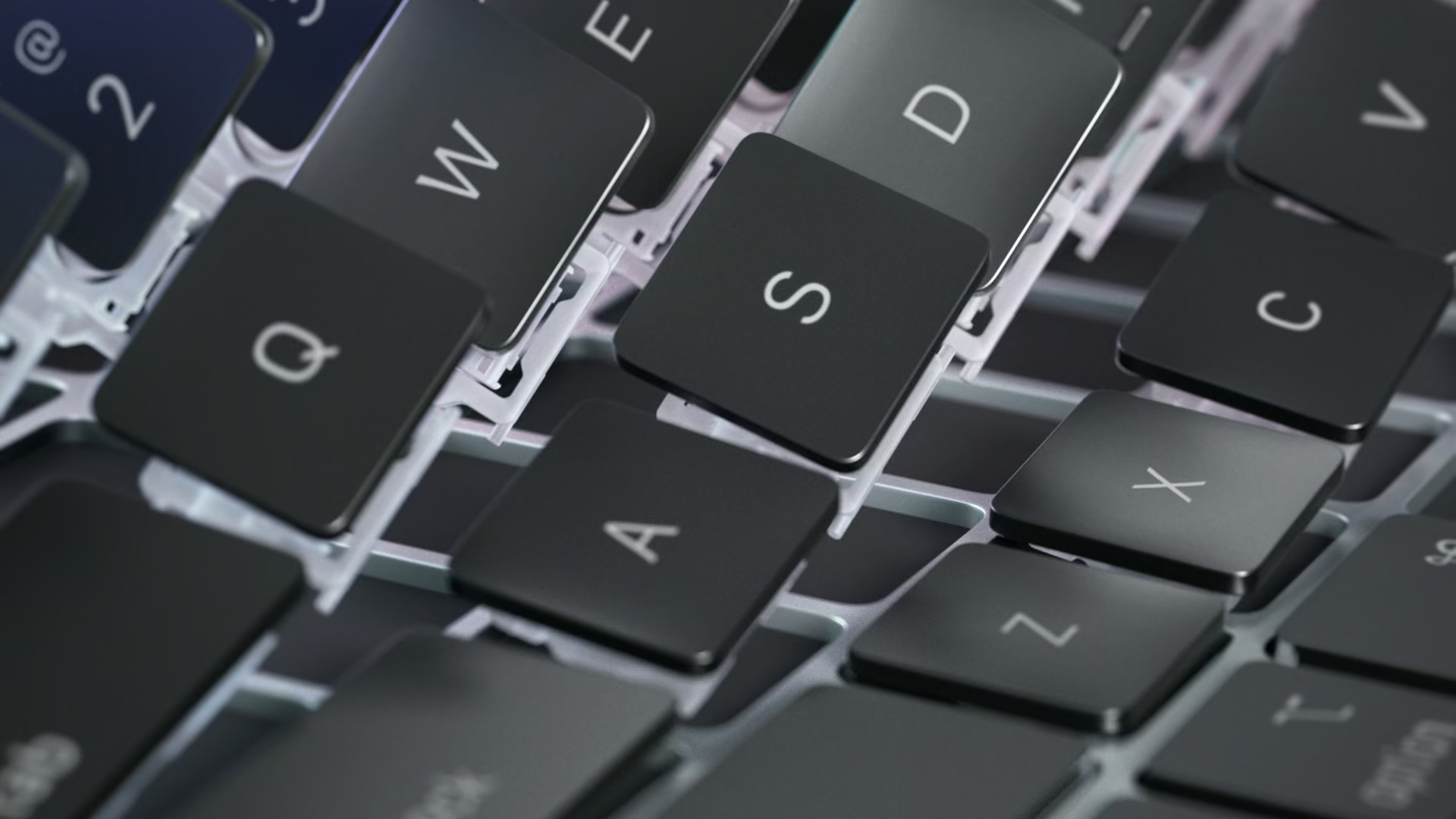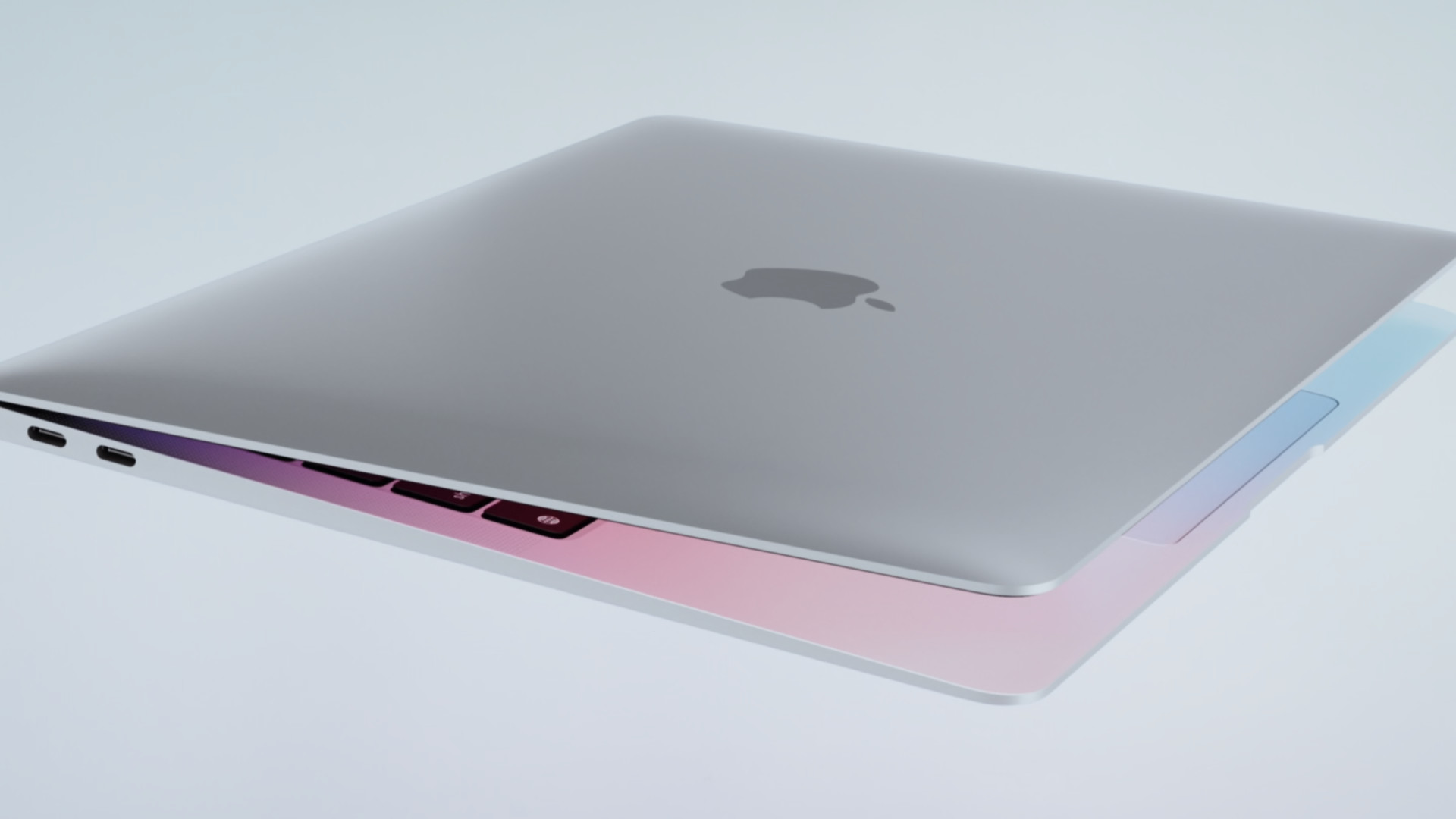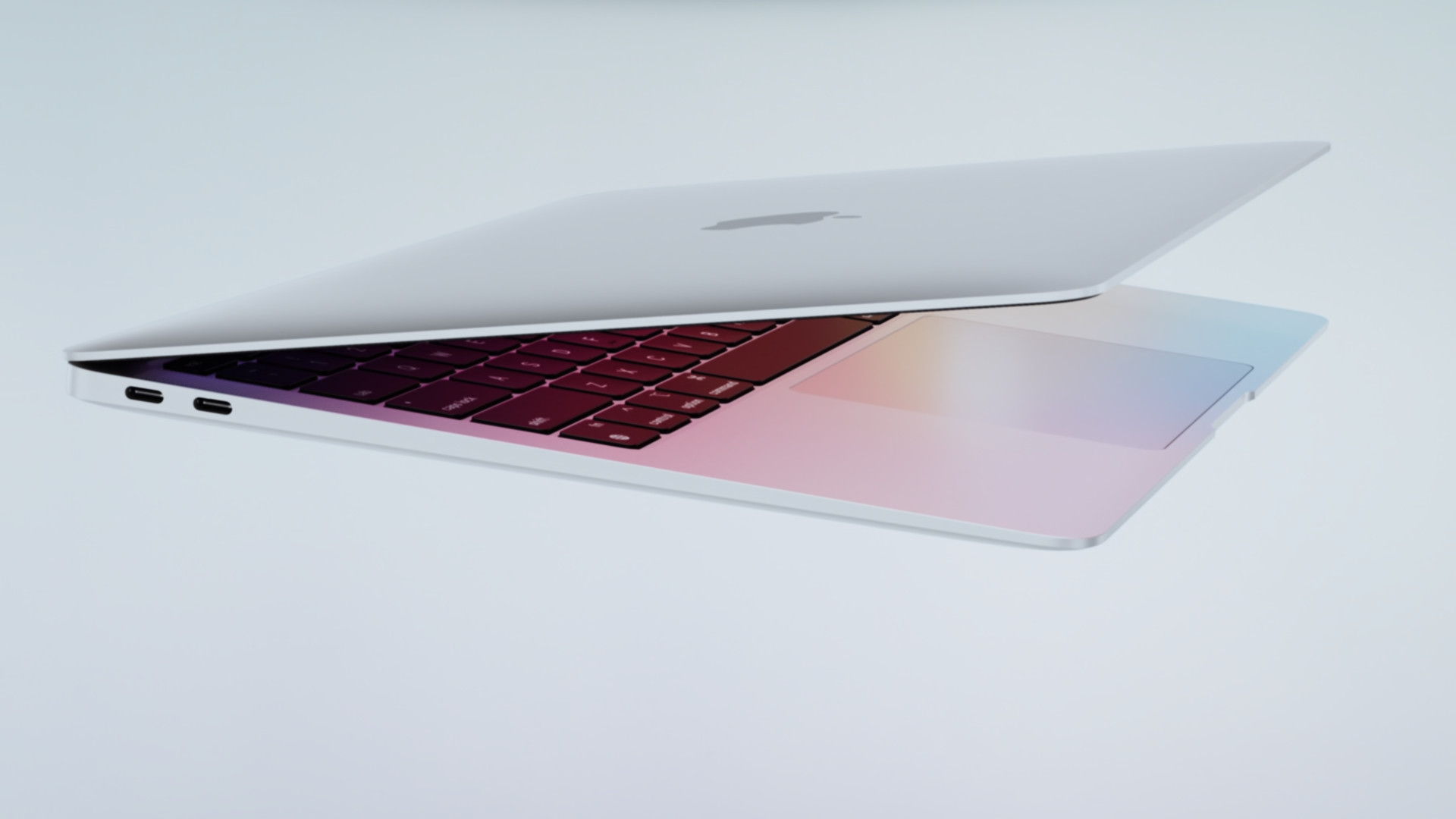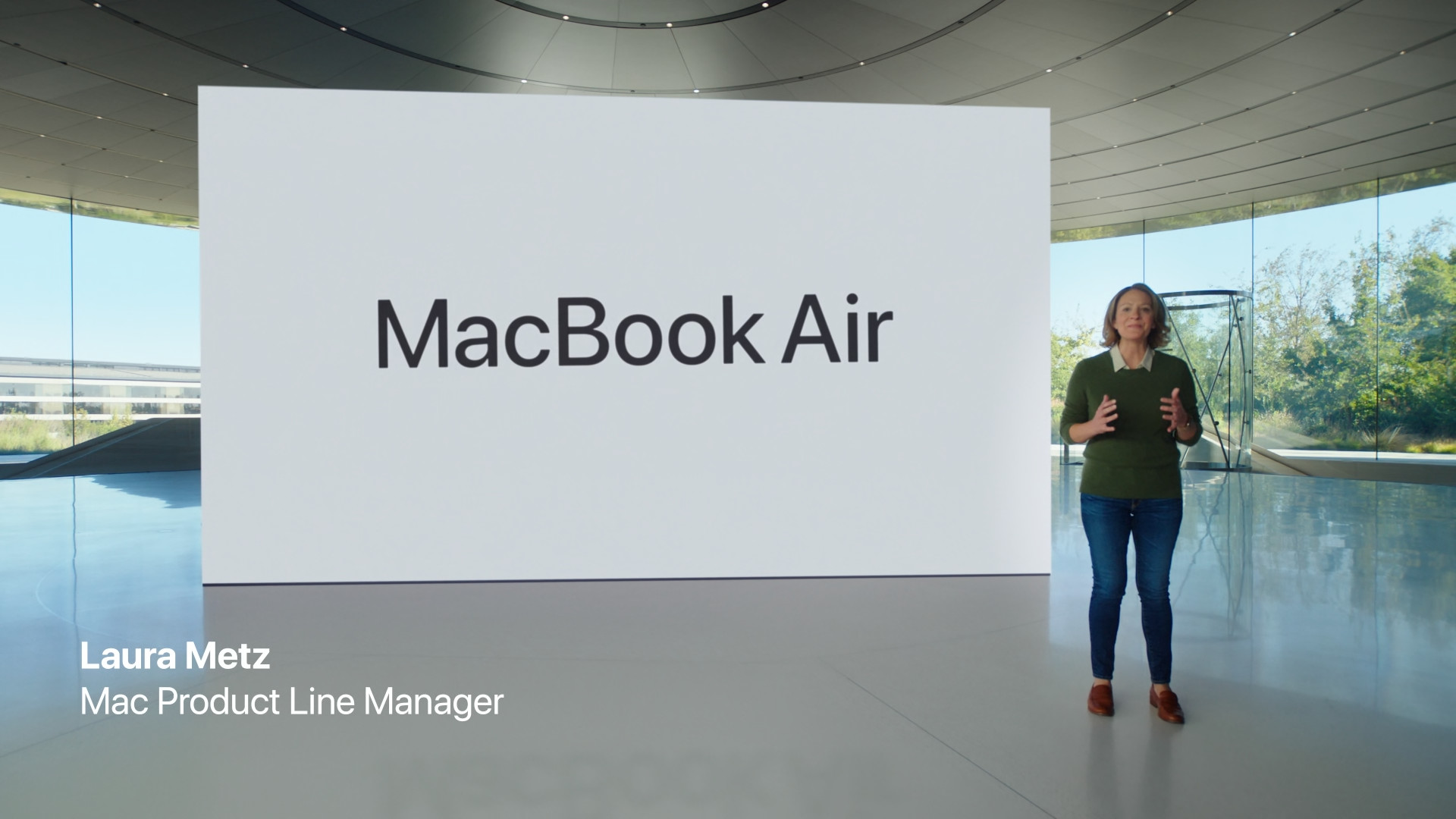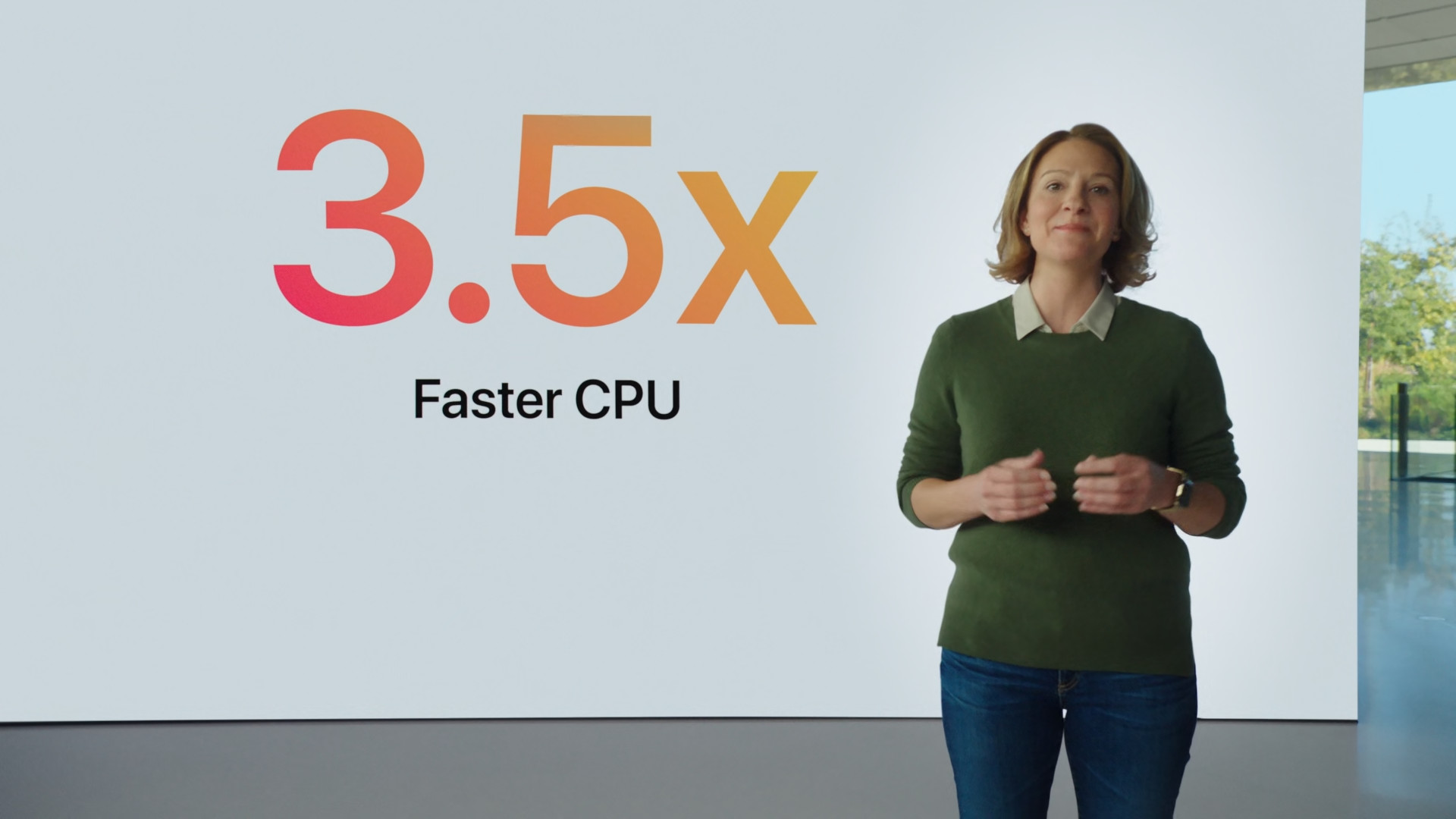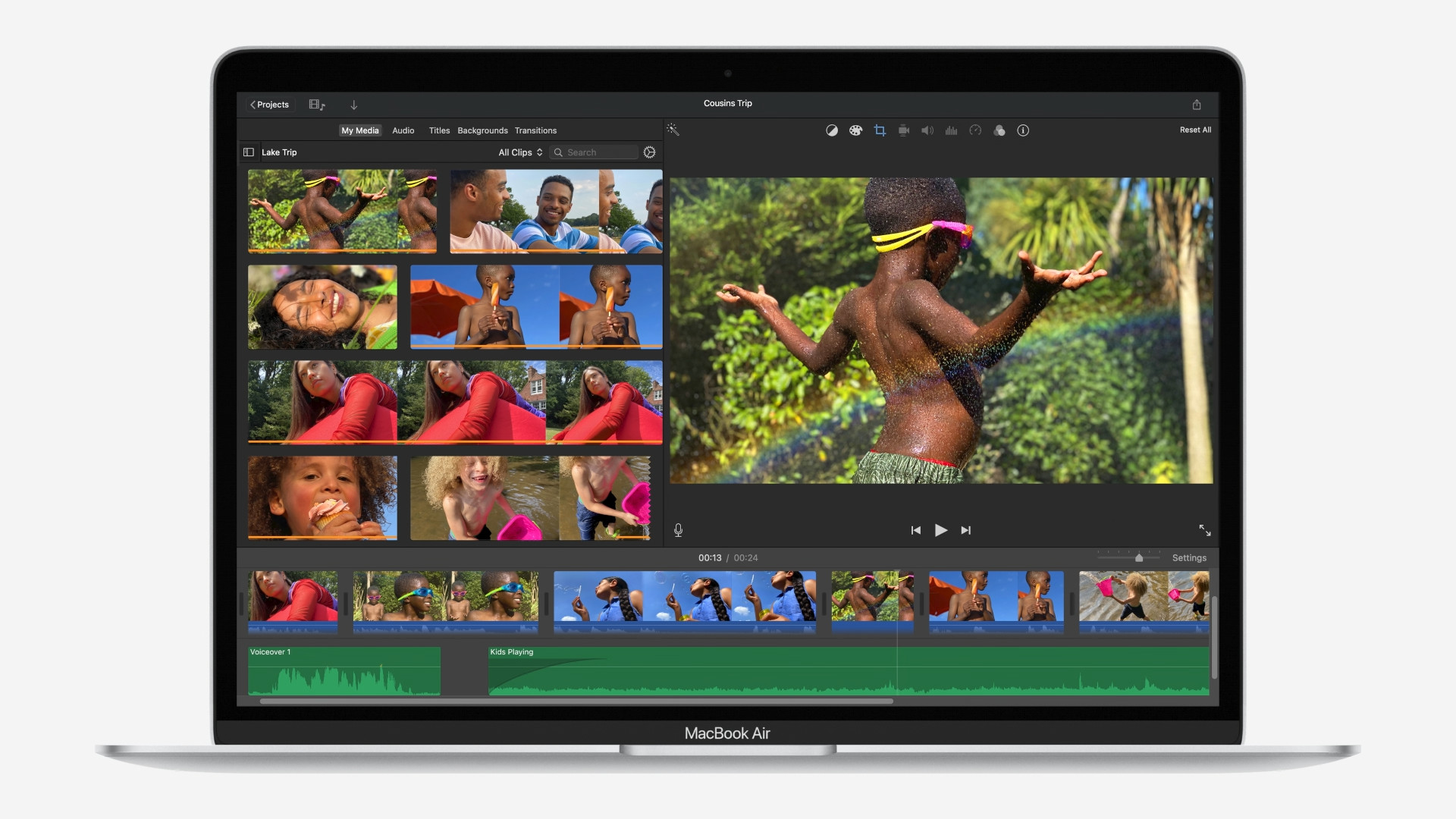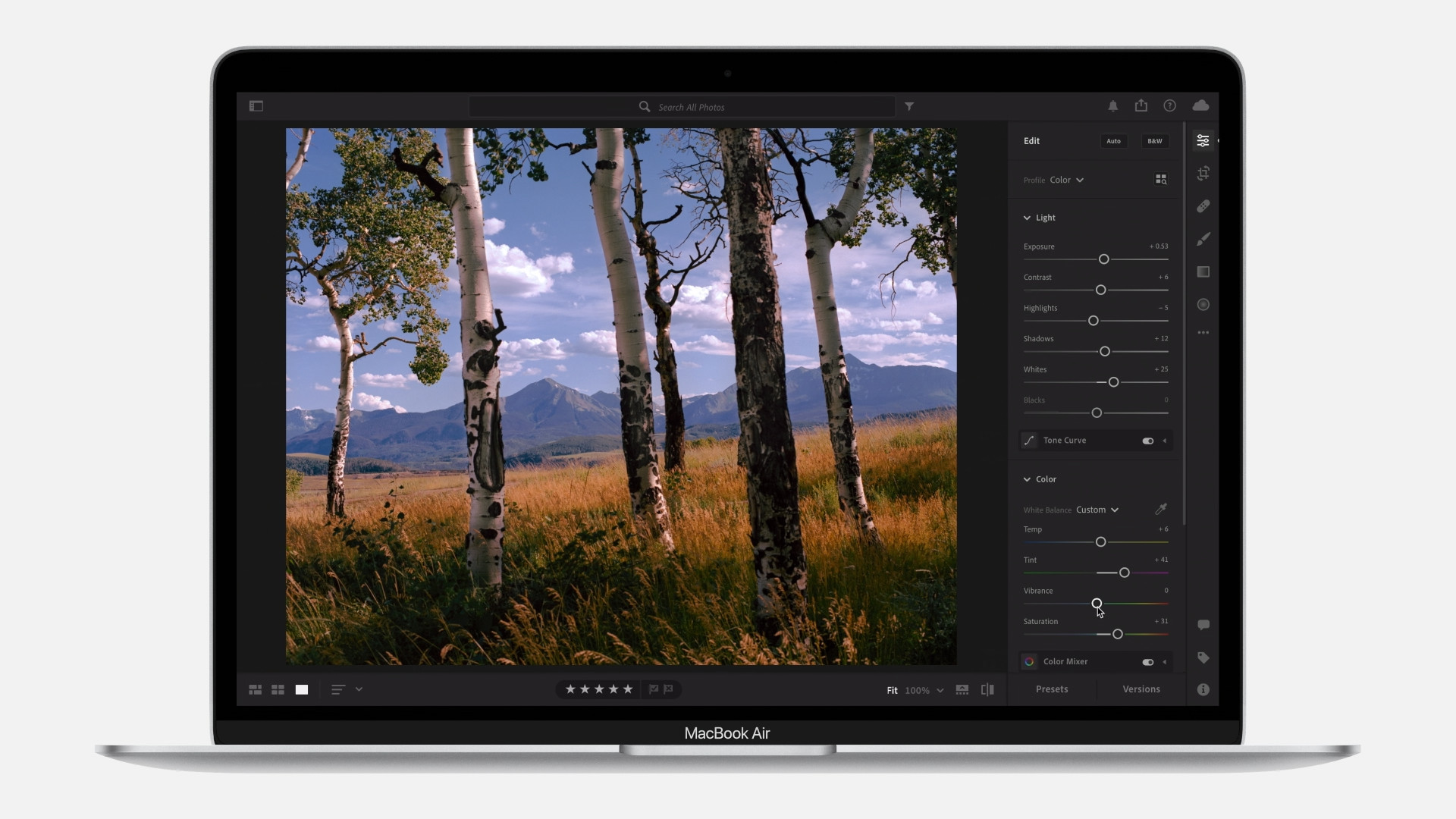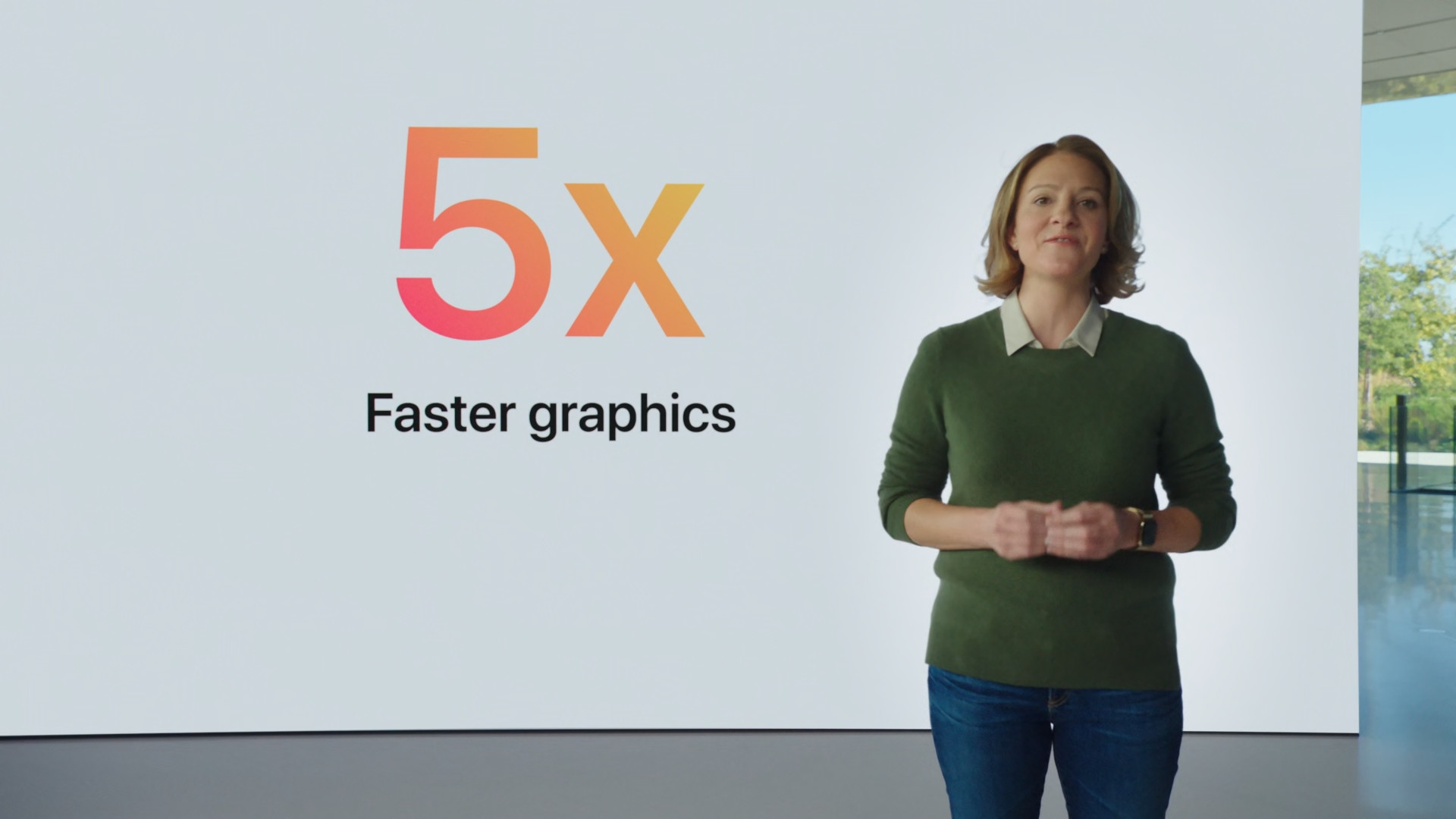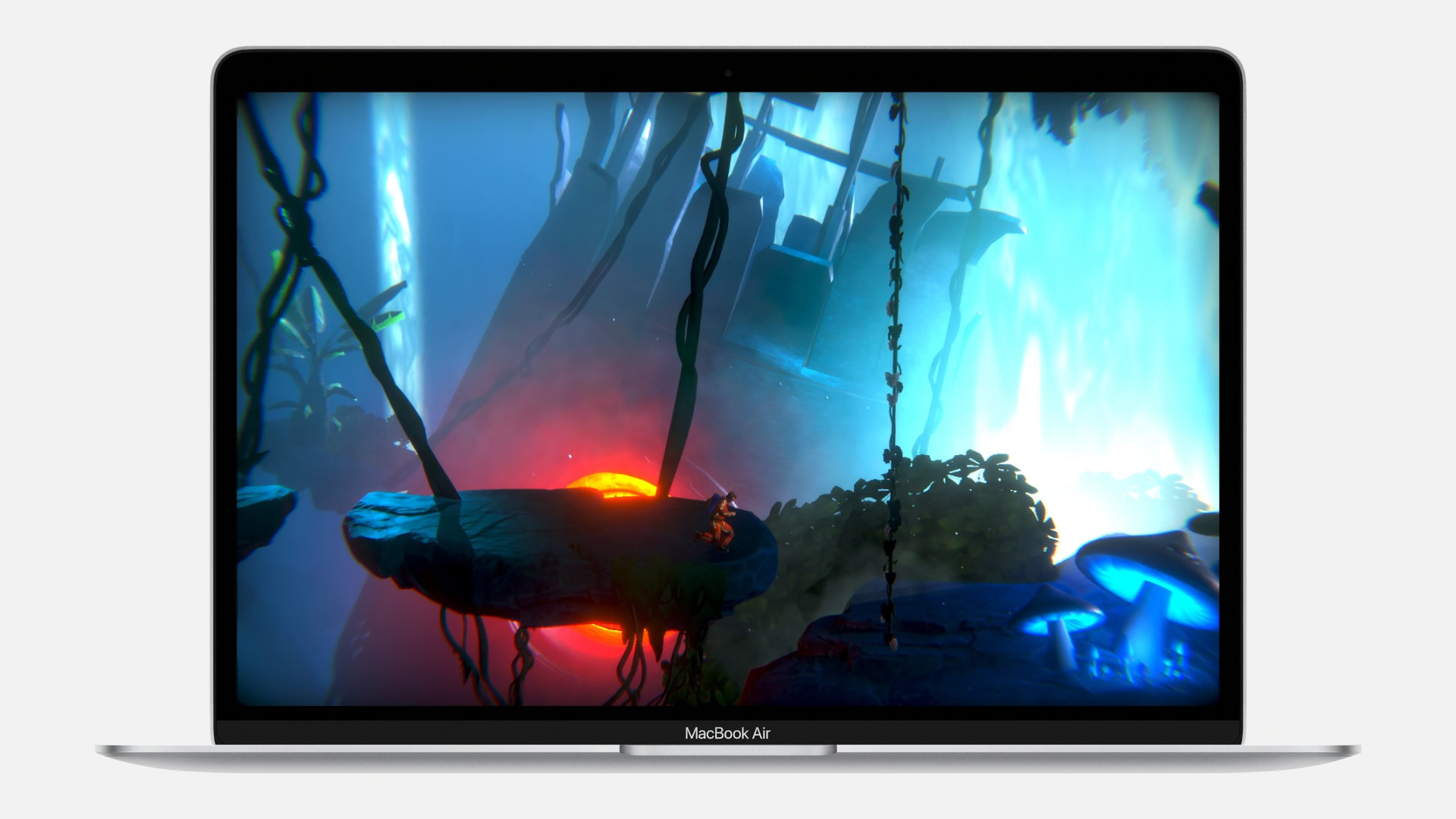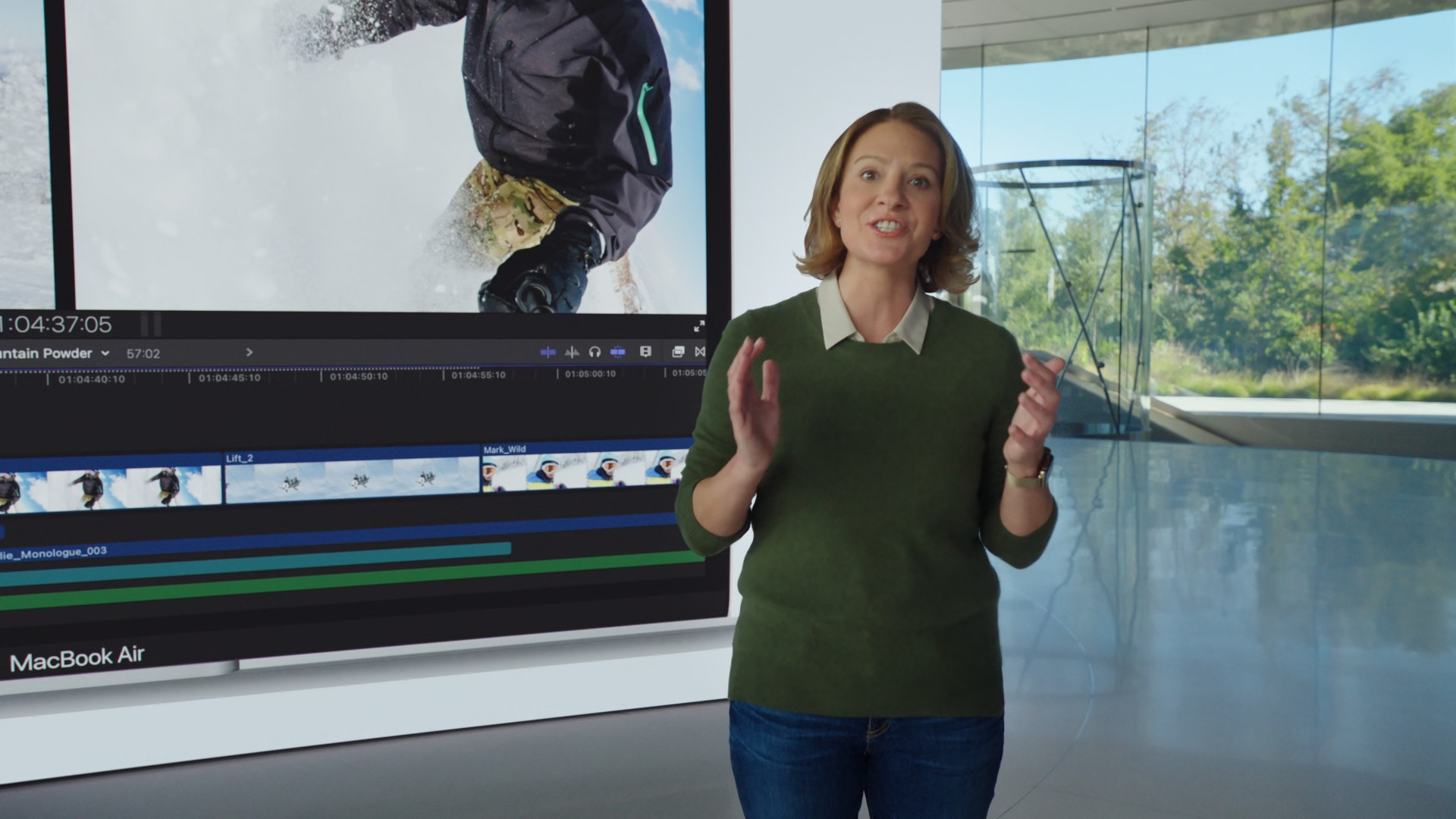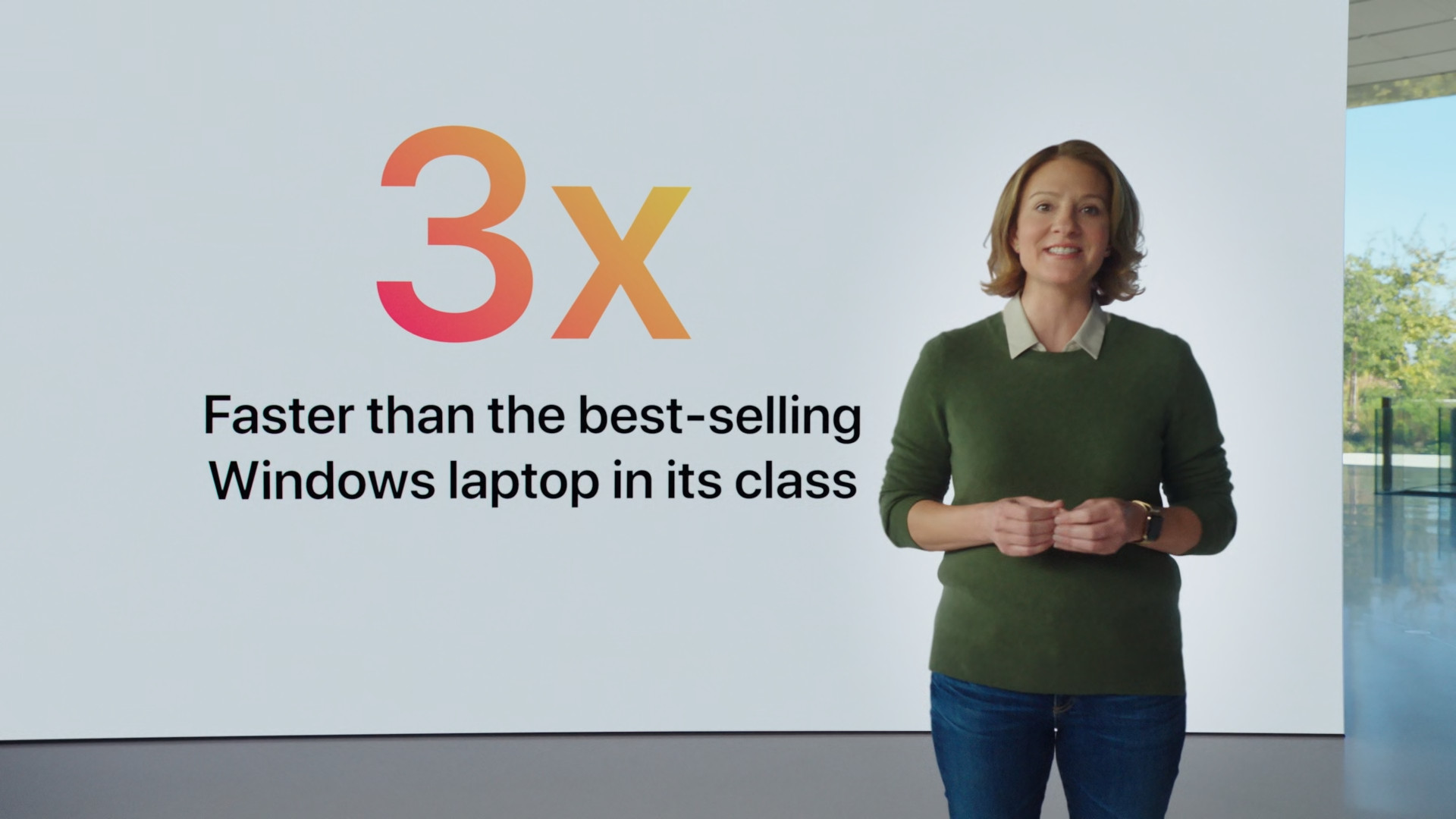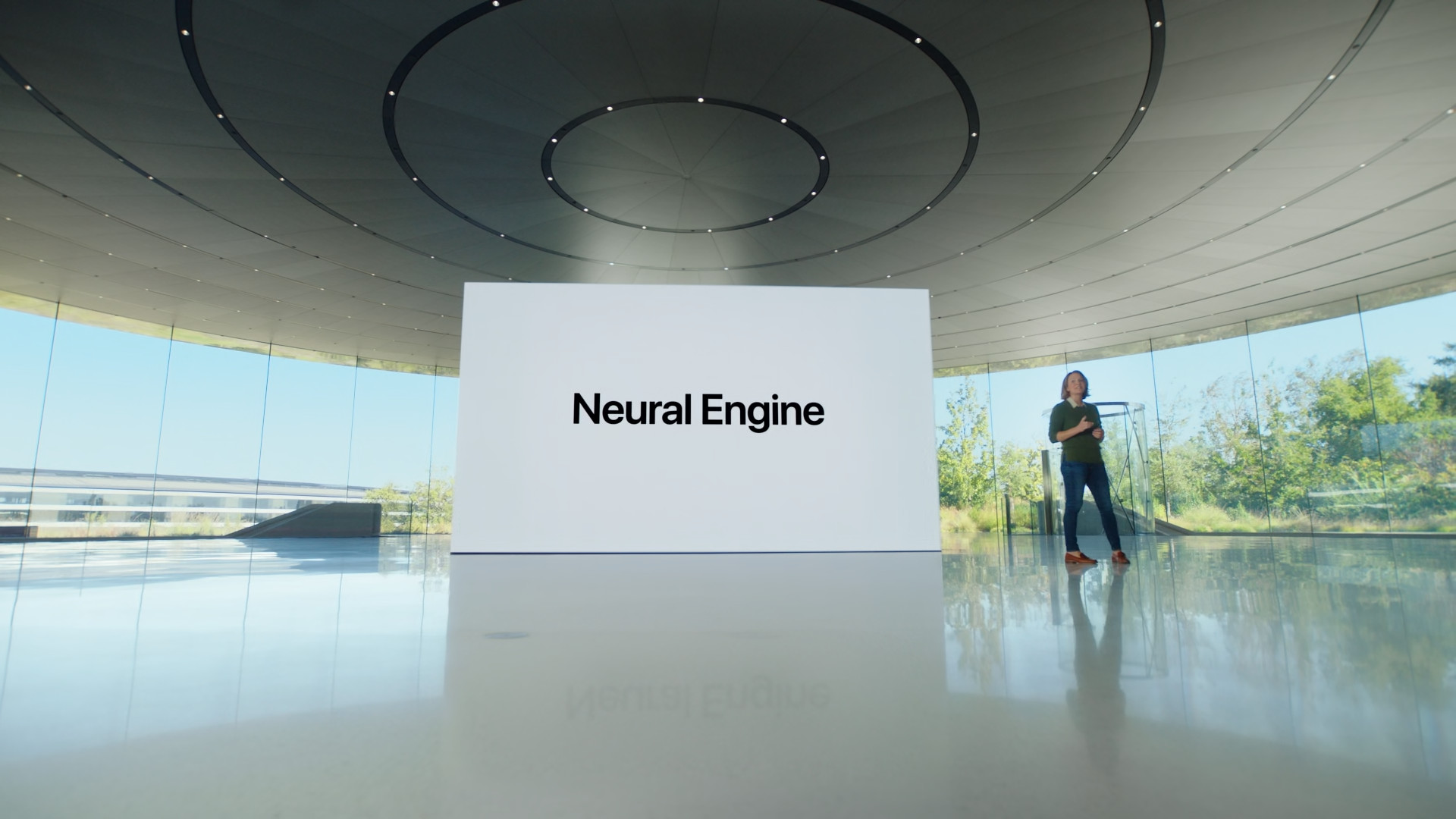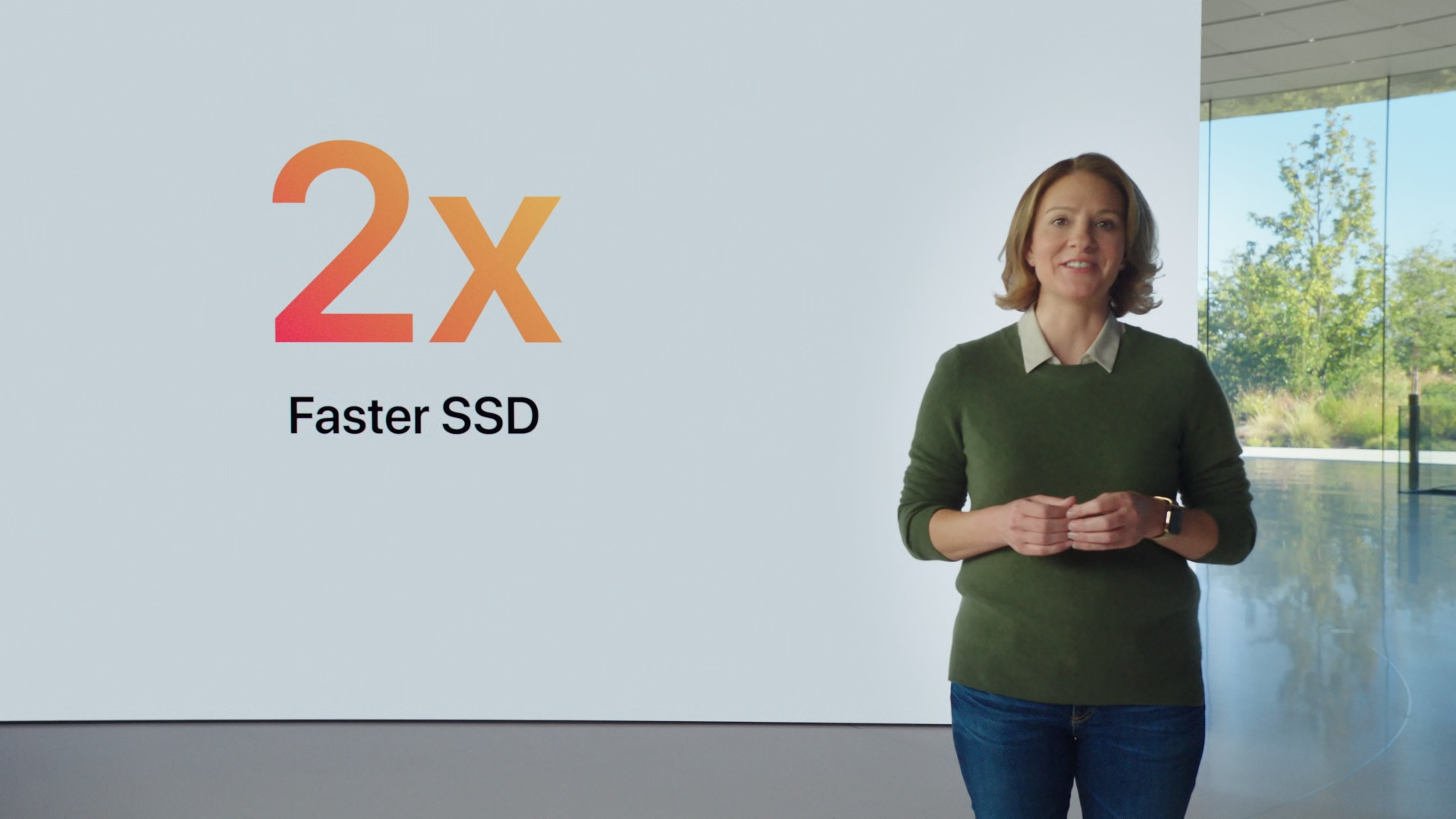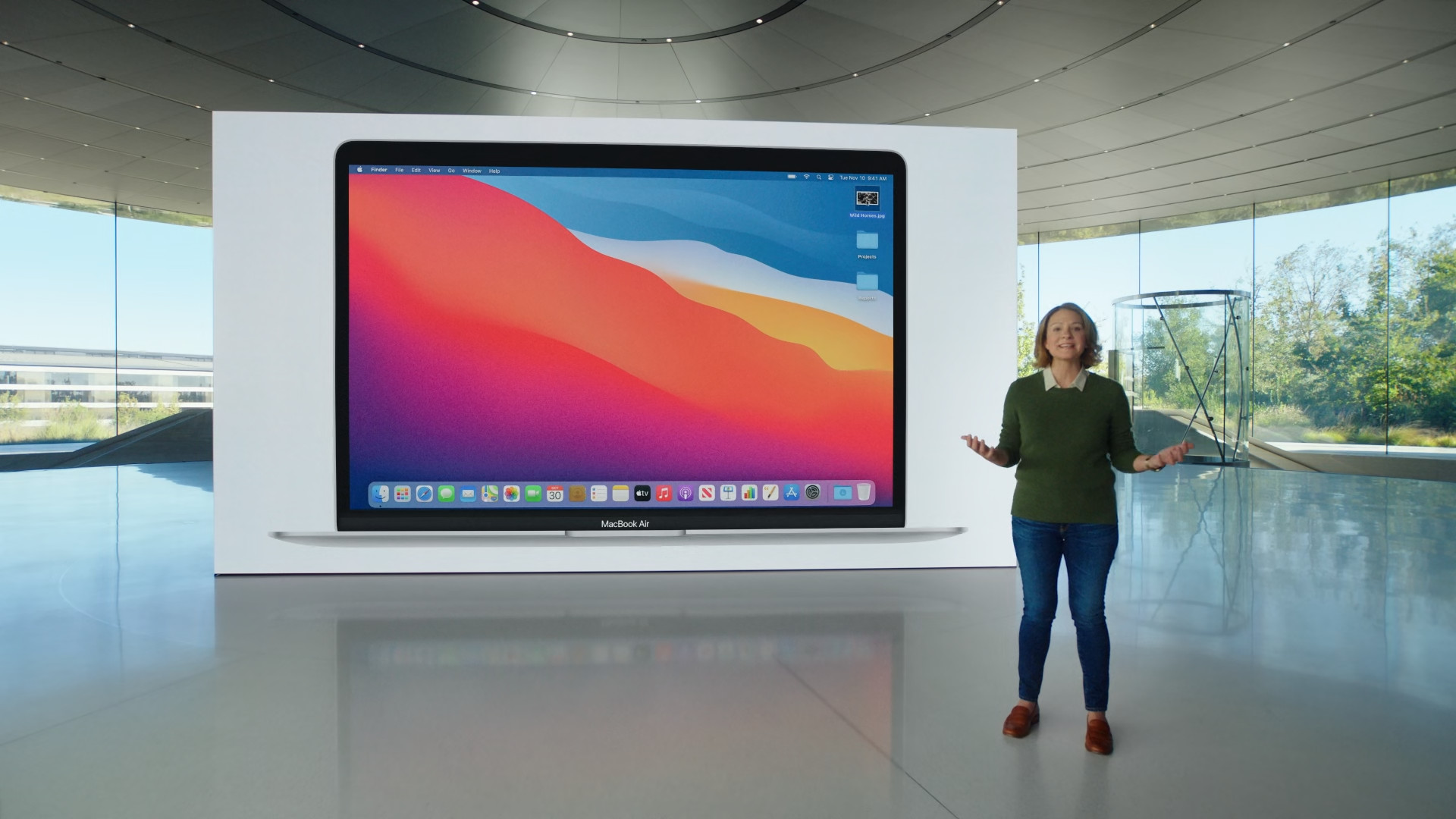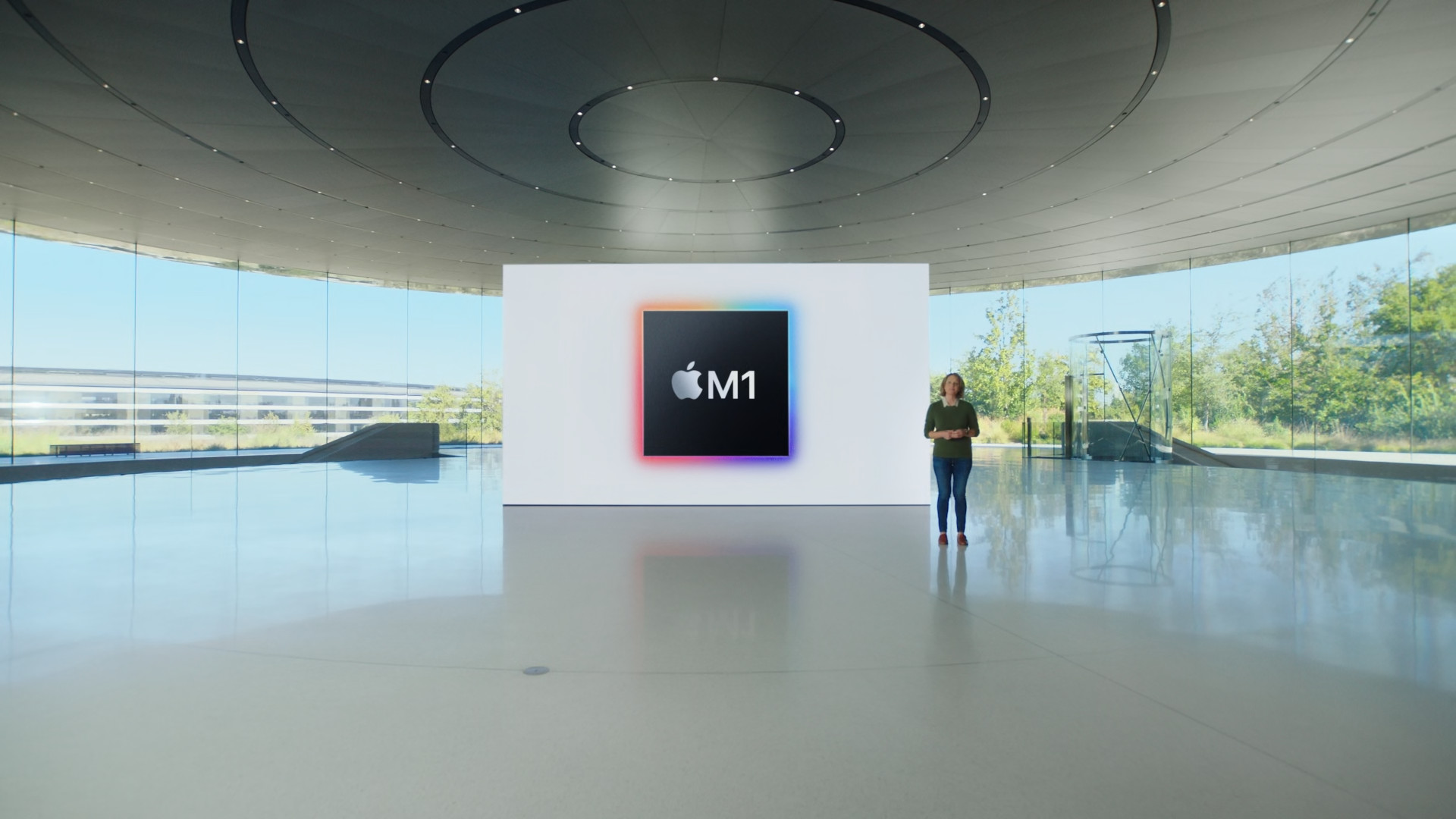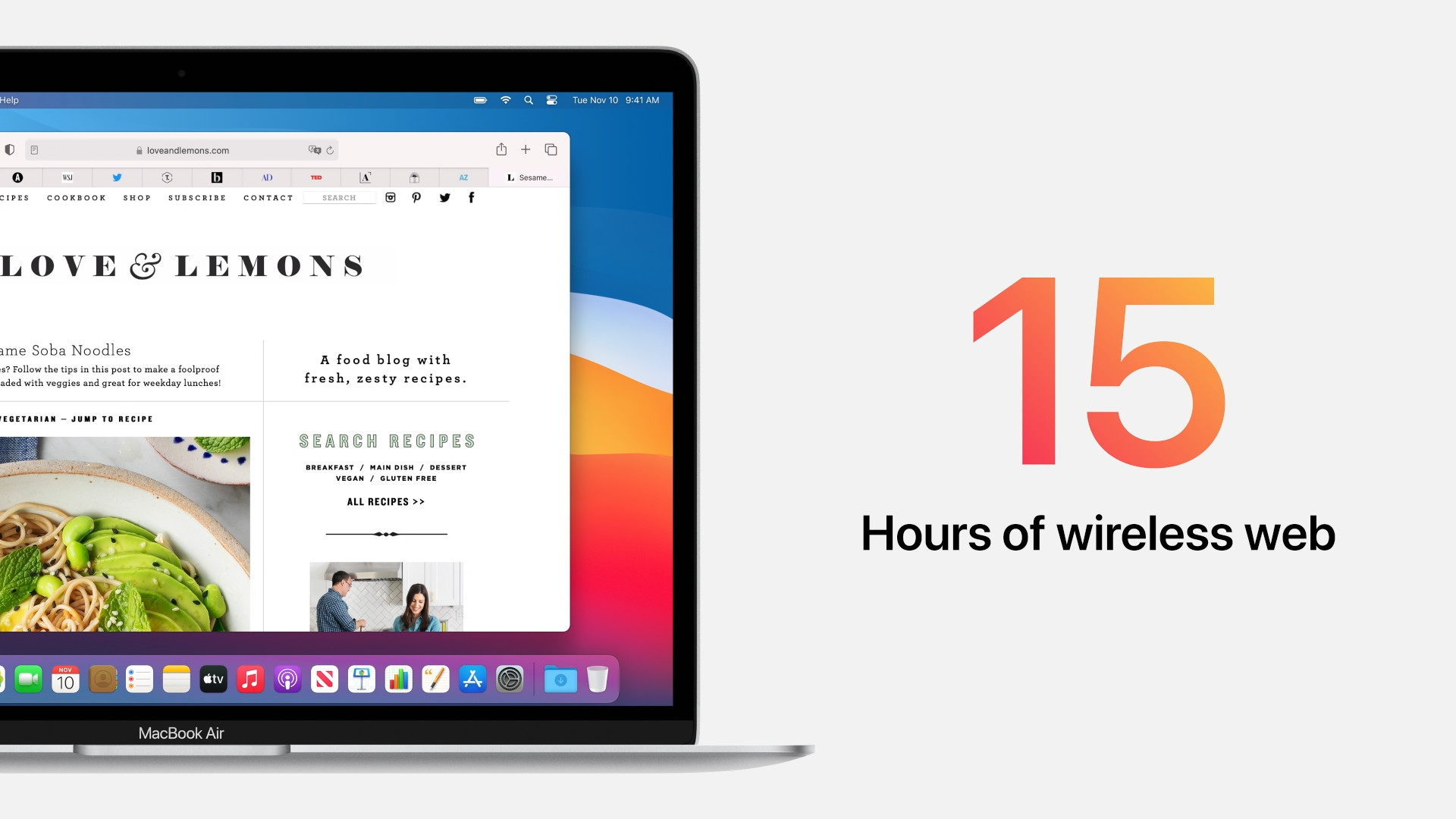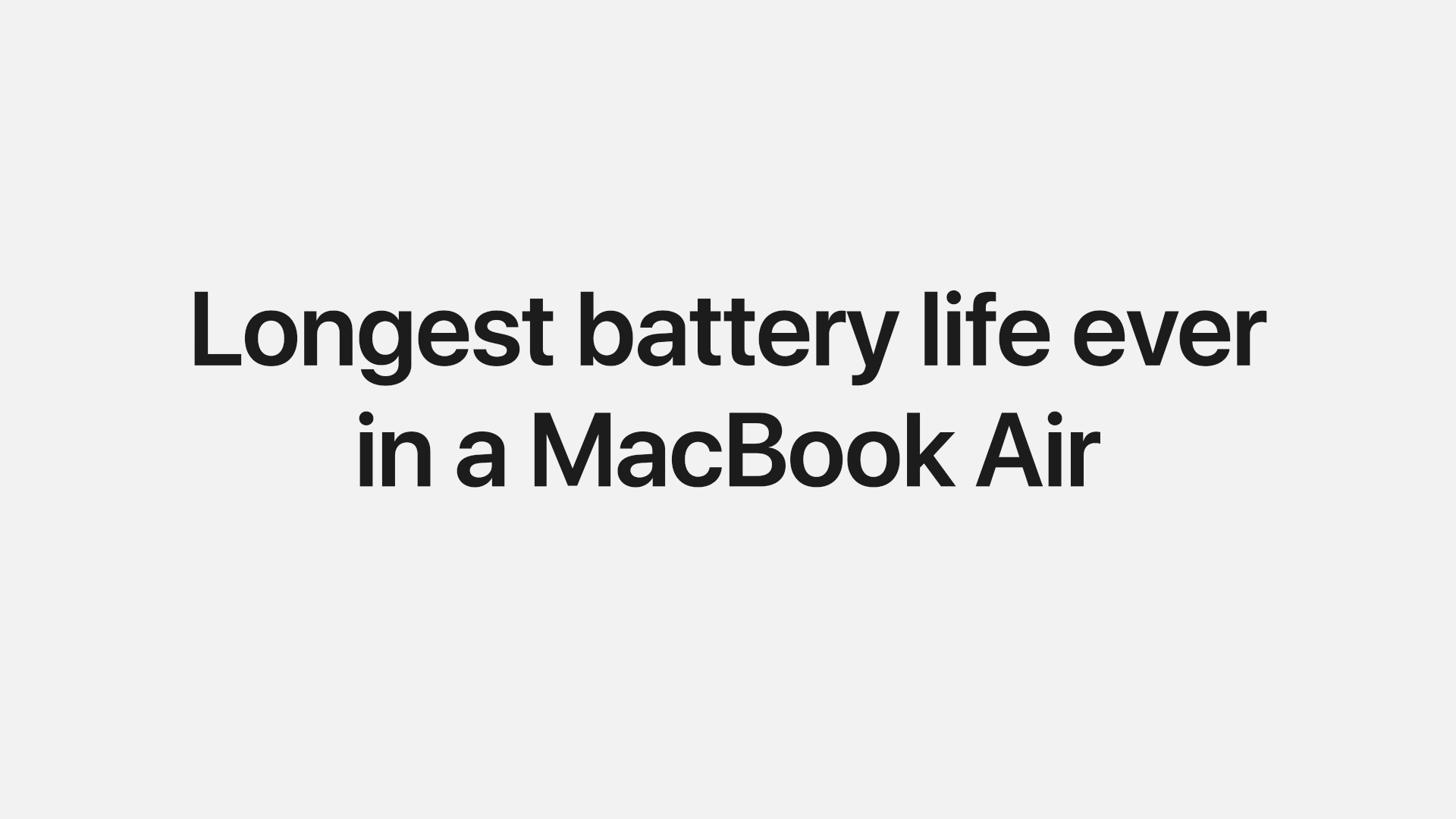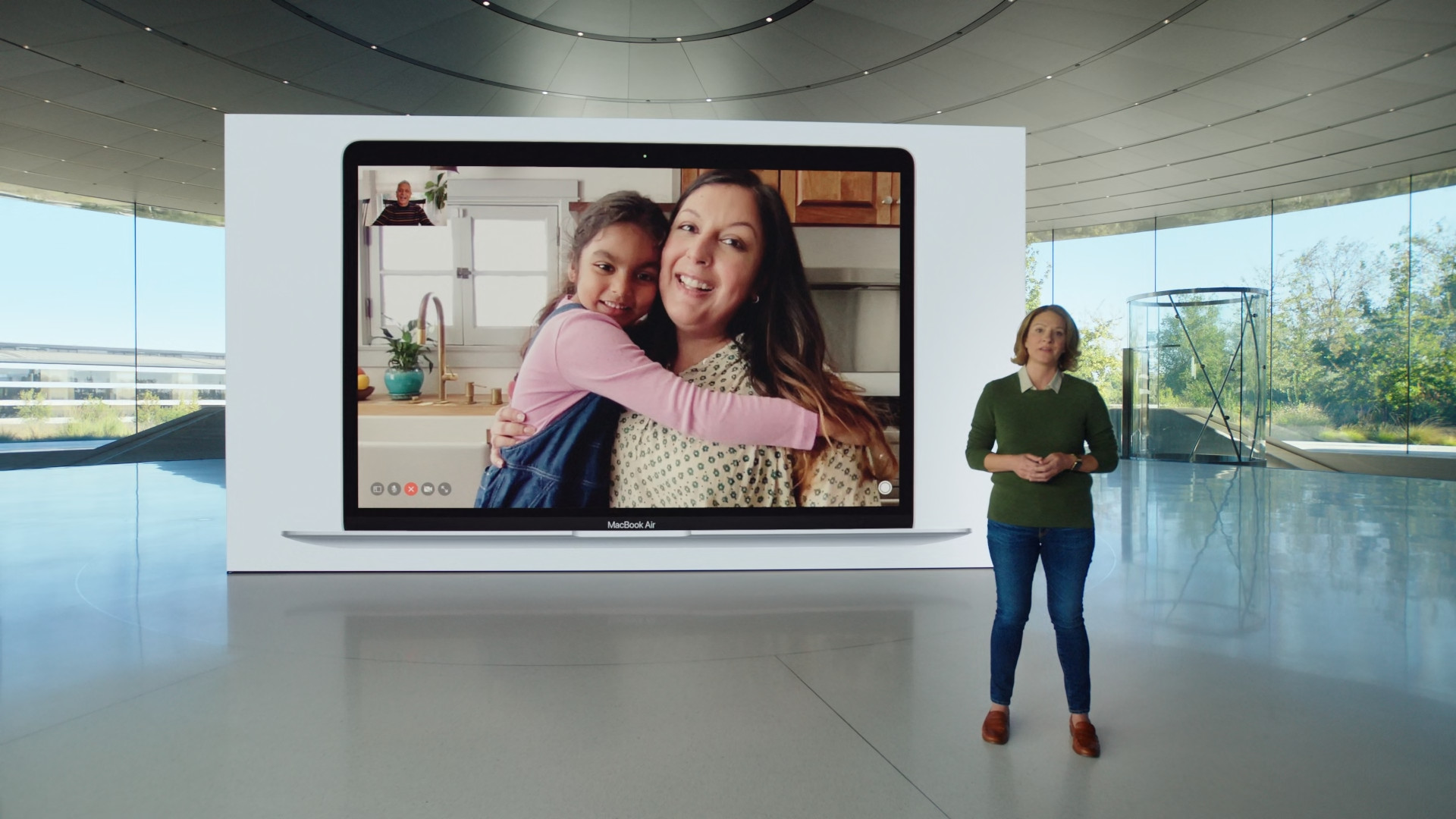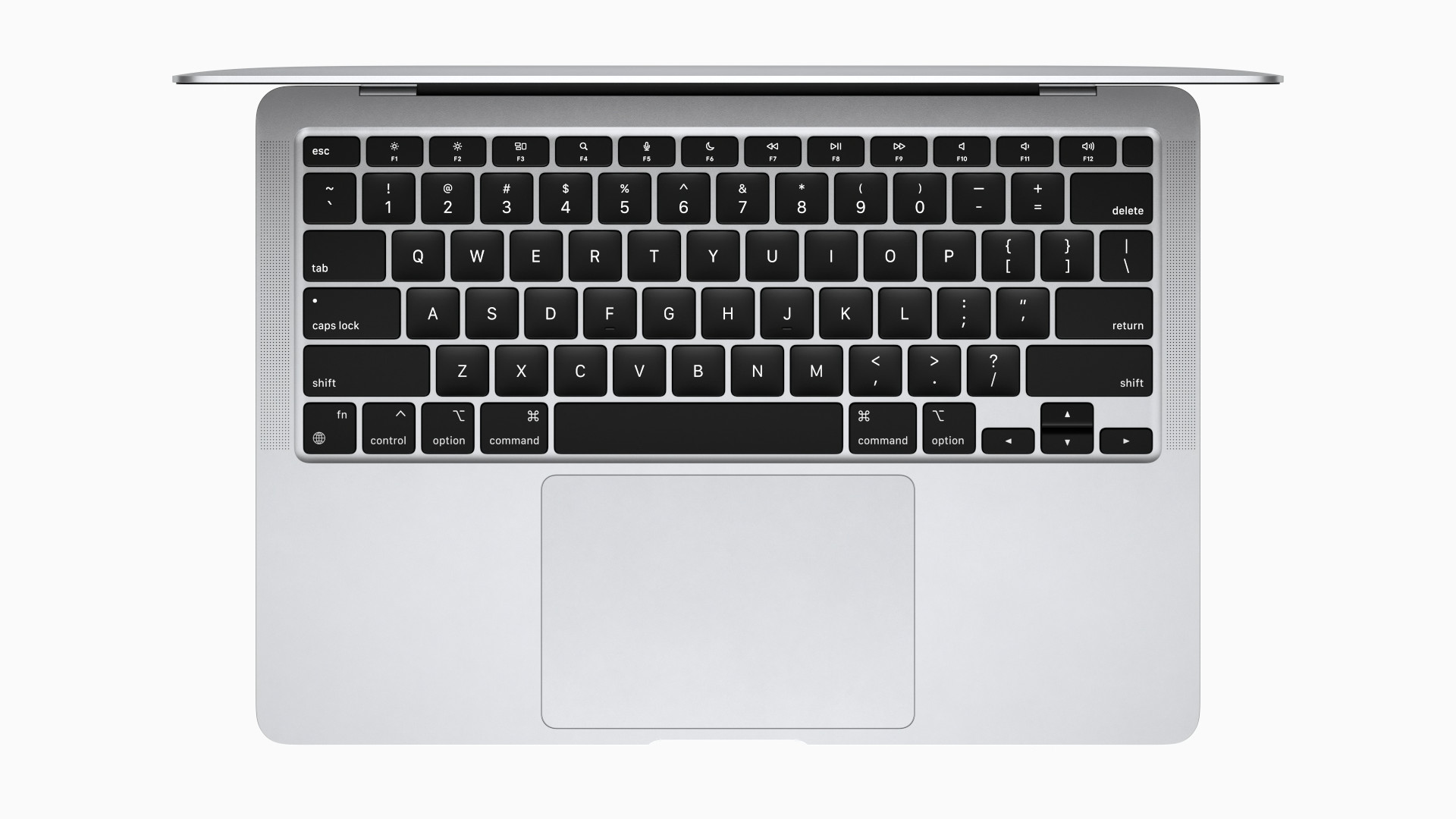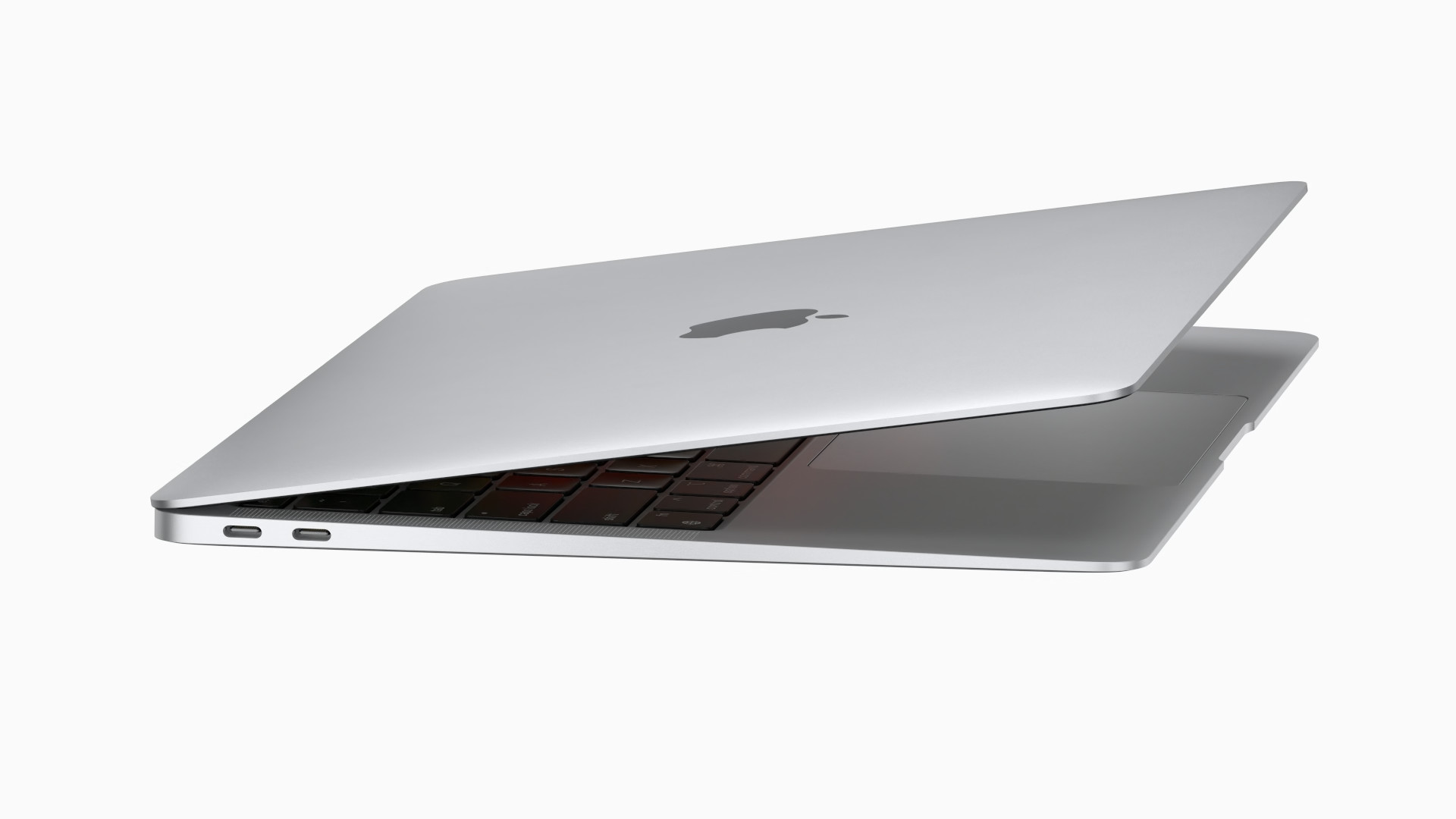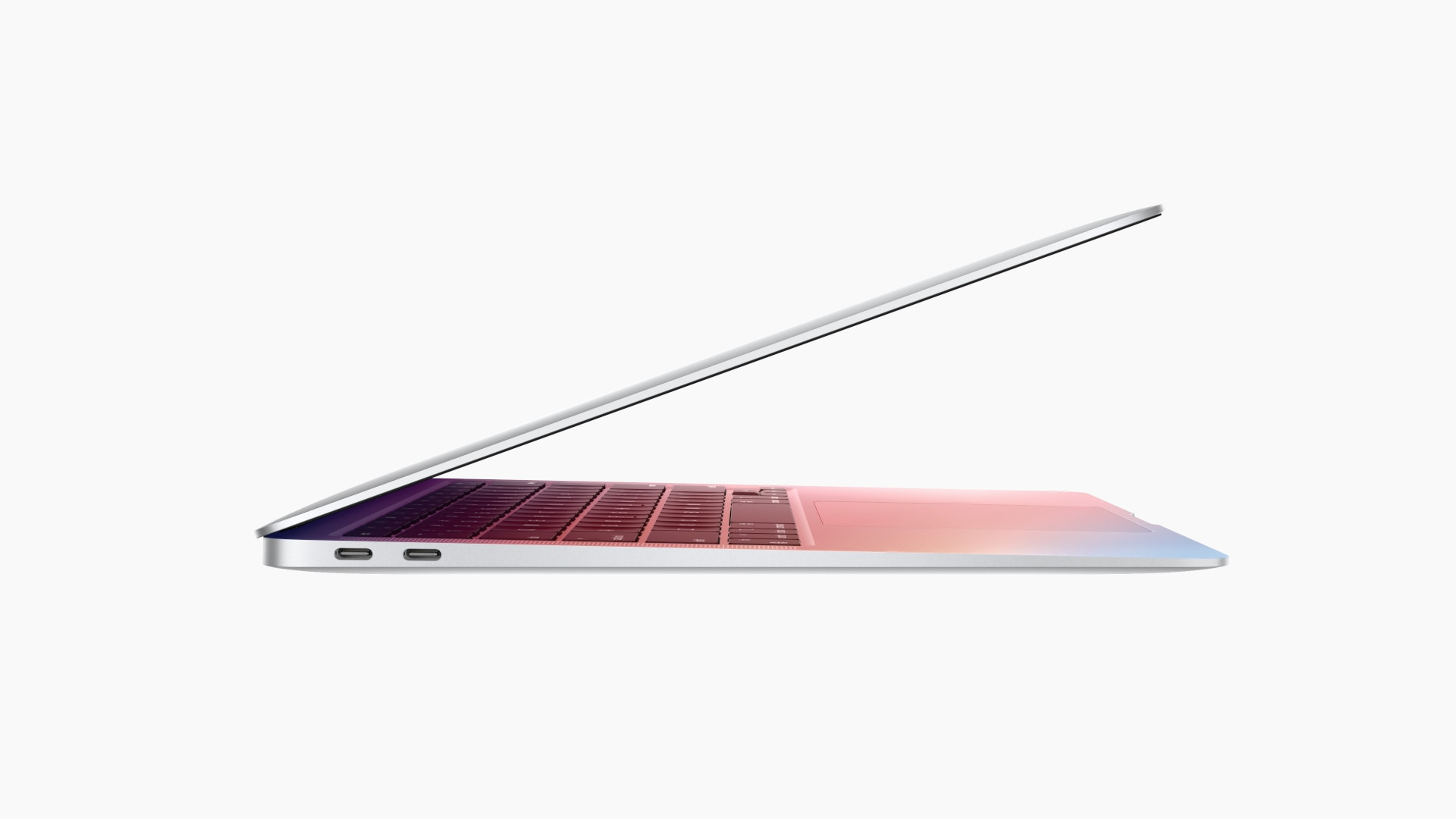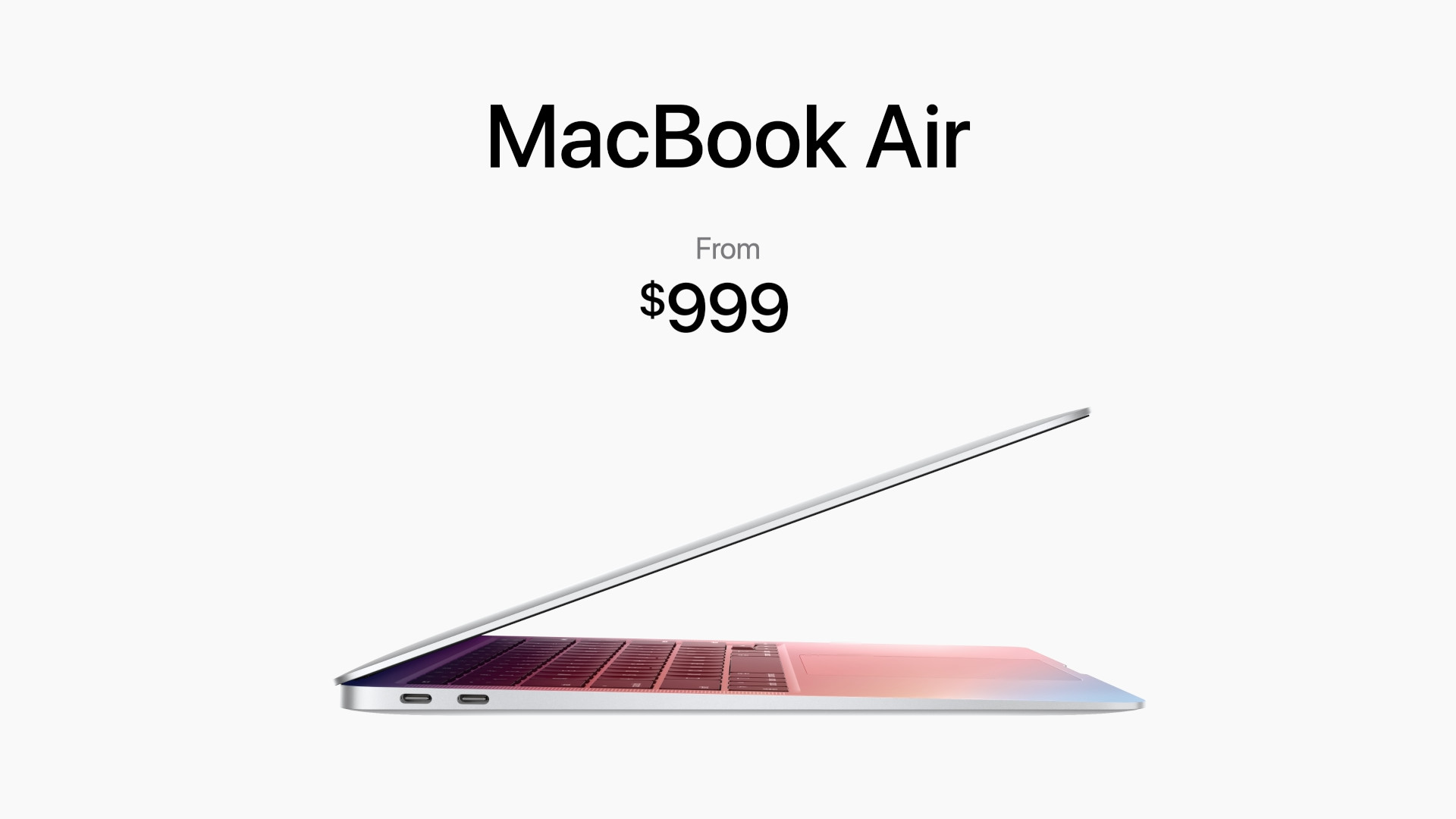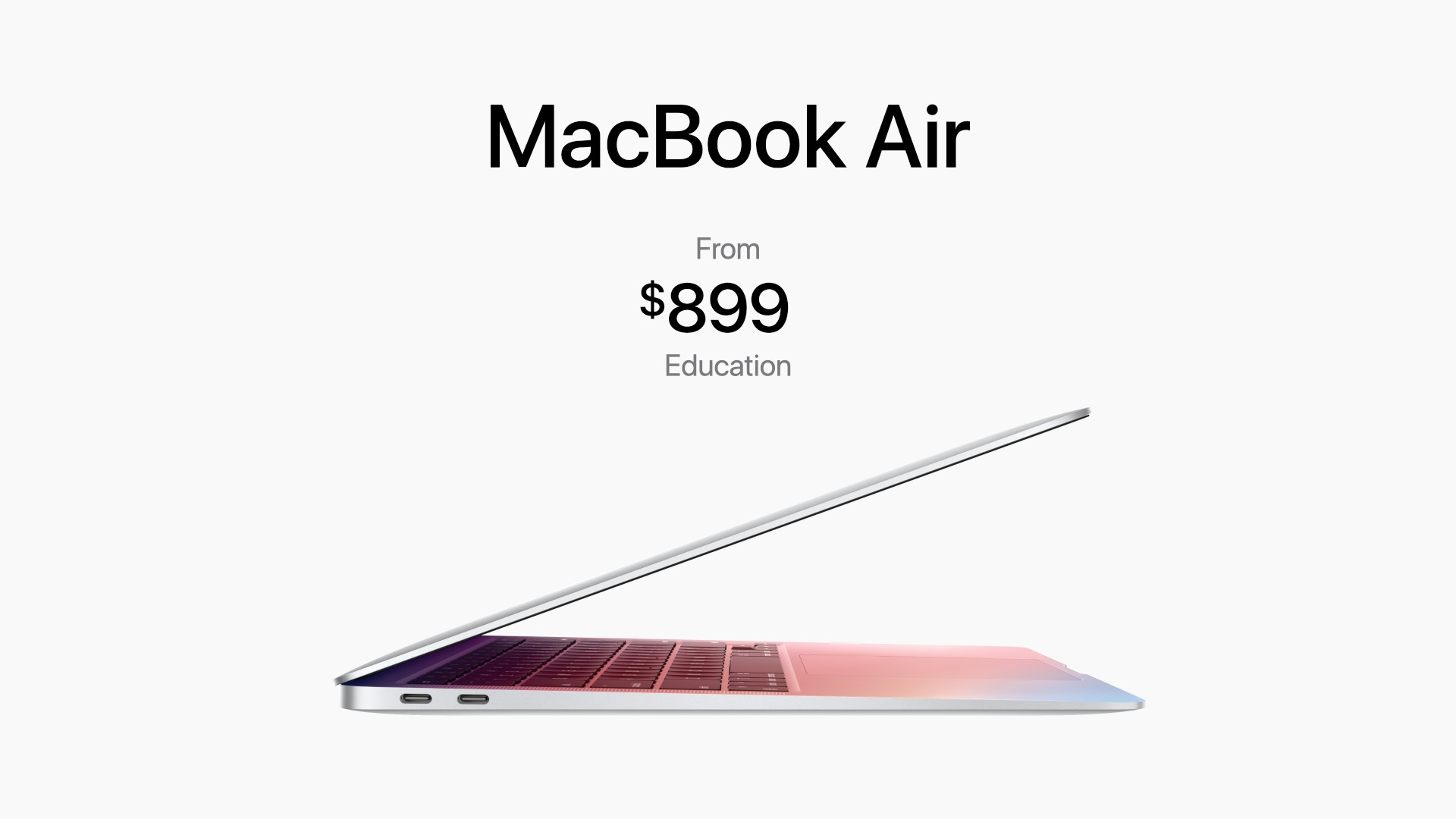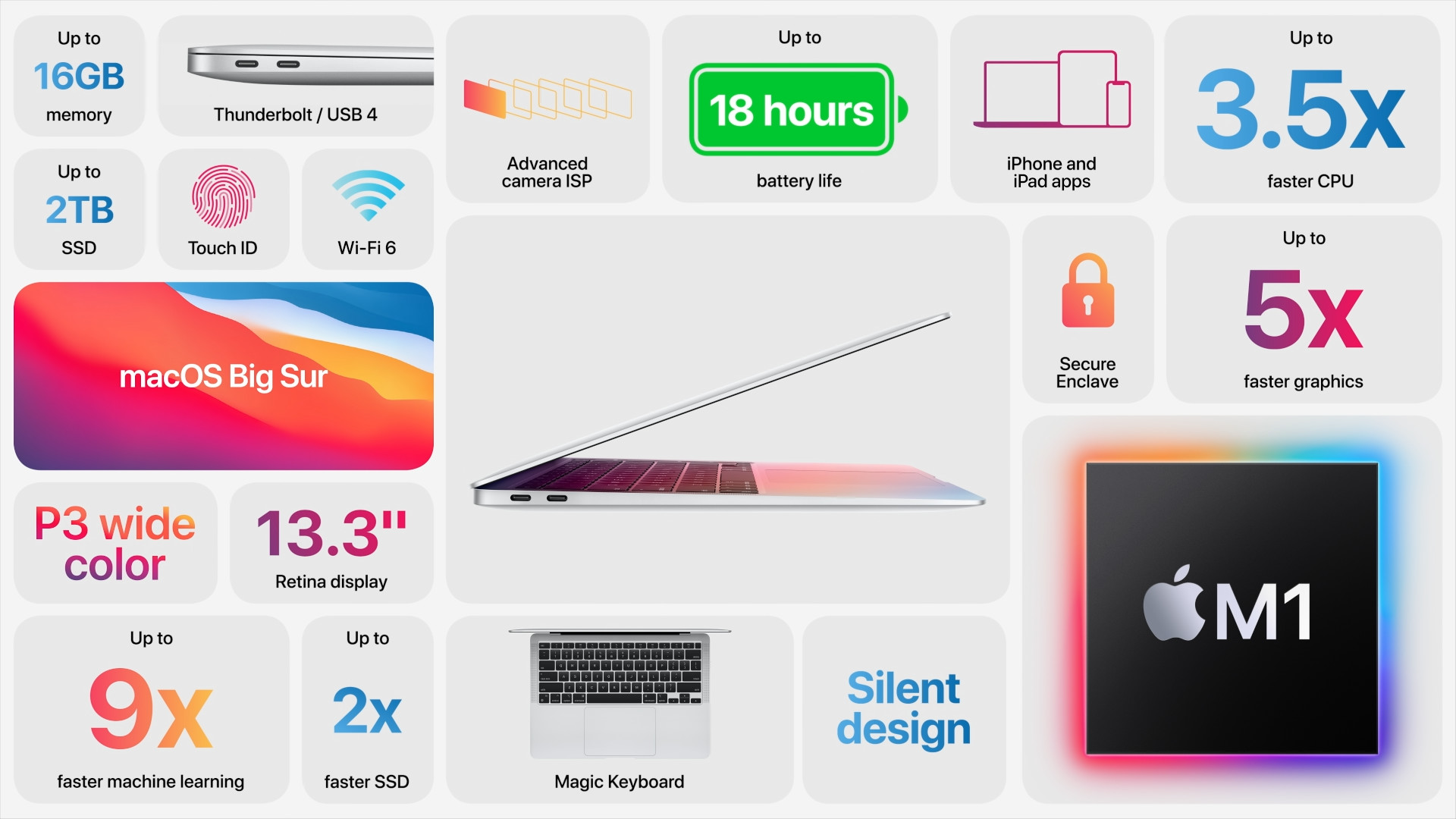The keynote is over and now we can take a look at the individual news that Apple presented today. In this article, we will focus on the new MacBook Air, which has changed a lot, and below you will find the most important or the most interesting things that you should know if you are thinking about buying it.
It could be interest you

Apple Silicone M1
The most fundamental change in the new MacBook Air (along with the 13″ MacBook Pro and the new Mac mini) is that Apple has equipped it with an entirely new processor from the Apple Silicon family – the M1. In the case of the MacBook Air, it is also the only processor that is available from now on, as Airs based on Intel processors have been officially discontinued by Apple. A huge number of question marks hang over the M1 chip, even though Apple tried to praise the new chips in every possible way during the keynote. Marketing slides and images are one thing, reality is another. We will have to wait until next week for real tests from a real environment, but if Apple's promises are confirmed, users have a lot to look forward to.
As for the processor as such, in the case of the MacBook Air, Apple offers a total of two variants of the M1 chip, depending on the selected configuration. The cheaper version of the Air will offer SoC M1 with an 8-core processor and 7-core integrated graphics, while the more expensive model will offer an 8/8 configuration. An interesting fact is that the same 8/8 chip is also found in the 13″ MacBook Pro, but unlike the Air, it has active cooling, so it can be expected that in this case Apple will loosen the reins of the M1 processor somewhat and it will be able to work with with a higher TDP value than in the passively cooled Air. However, as already stated above, we will have to wait a few more days for data from real traffic.
It could be interest you

The presence of the new processor should enable more efficient use of the computing power and resources offered by the new chip. At the same time, the new processor enables the implementation of a more robust security system, thanks to its own architectural design and the fact that the macOS Big Sur operating system is tailor-made for these chips.
Great battery life
One of the advantages of the new processors is much better optimization of hardware and software, since both are Apple products. We have known something like this for years with iPhones and iPads, where it is clear that tuning one's own software to one's own hardware brings fruit in the form of efficient use of the processor's capabilities, efficient use of electricity, and thus longer battery life, as well as generally lower demands on the hardware as such. Thus, iPhones with weaker hardware (especially RAM) and batteries with smaller capacities sometimes achieve better results than phones on the Android platform. And the same is likely happening now with the new Macs. At first glance, this is evident when looking at the battery life charts. The new Air boasts up to 15 hours of web browsing time (compared to 11 hours for the previous generation), 18 hours of movie playback time (compared to 12 hours) and all this while retaining the same 49,9 Wh battery. In terms of operational efficiency, the new Macs should be far ahead of the last generation. As in the case of performance, this claim will be confirmed or refuted after the publication of the first real tests.
Still the same FaceTime camera or not?
On the other hand, what hasn't changed is the FaceTime camera, which has been the target of criticism for MacBooks for several years. Even in the case of news, it is still the same camera with 720p resolution. According to information from Apple, however, the new M1 processor will help with image quality this time, which should, just as happens in iPhones for example, significantly improve display quality and with the help of the Neural Engine, machine learning and improved capabilities of the image coprocessor.
It could be interest you
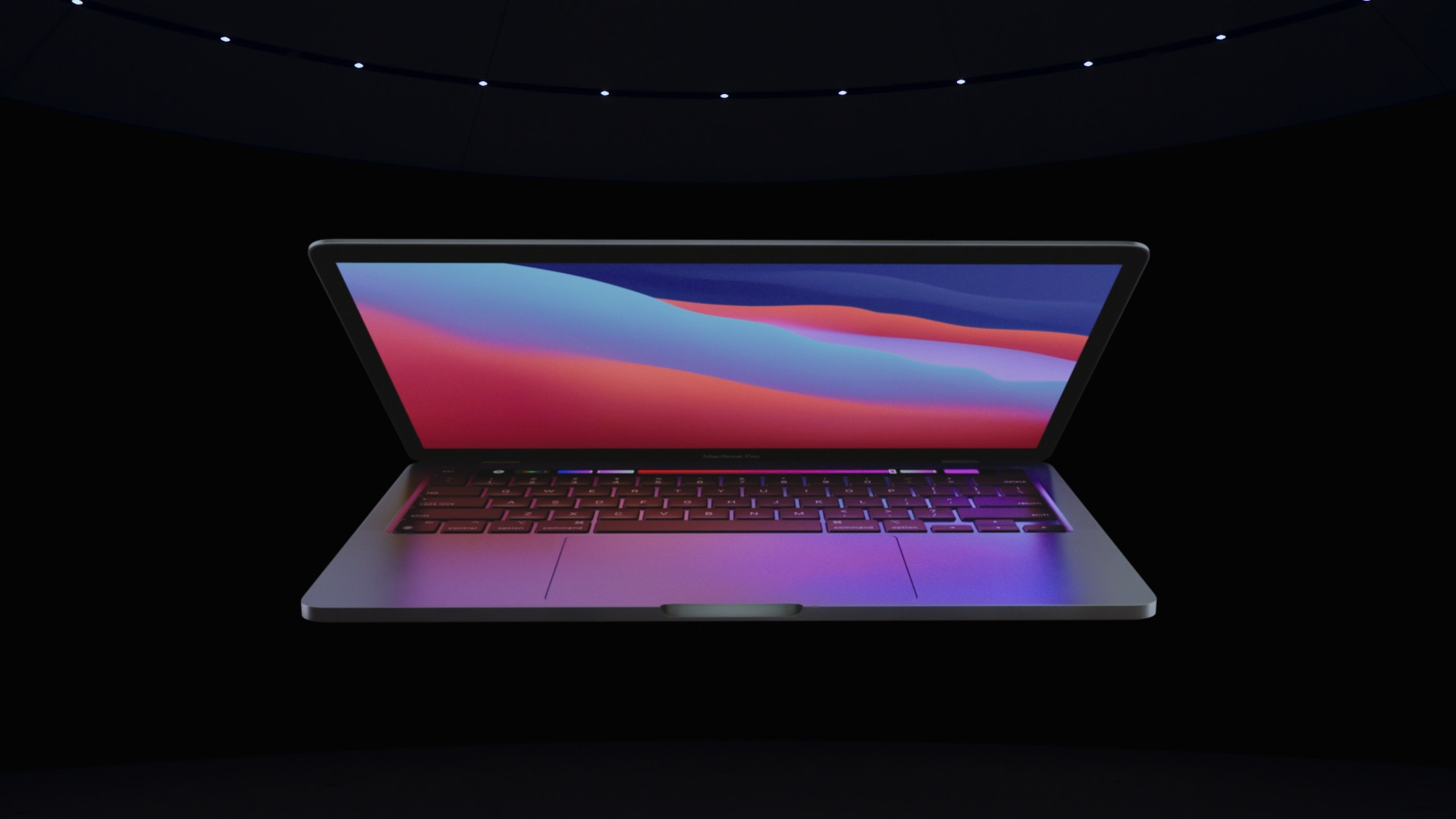
Other
If we compare the new Air with the old one, there has been a slight change in the display panel, which now supports the P3 color gamut, the brightness of 400 nits has been preserved. The dimensions and weight, the keyboard and the combination of speakers and microphones are also the same. The novelty will offer support for WiFi 6 and a pair of Thunderbolt 3/USB 4 ports. It goes without saying that Touch ID is supported.
It could be interest you
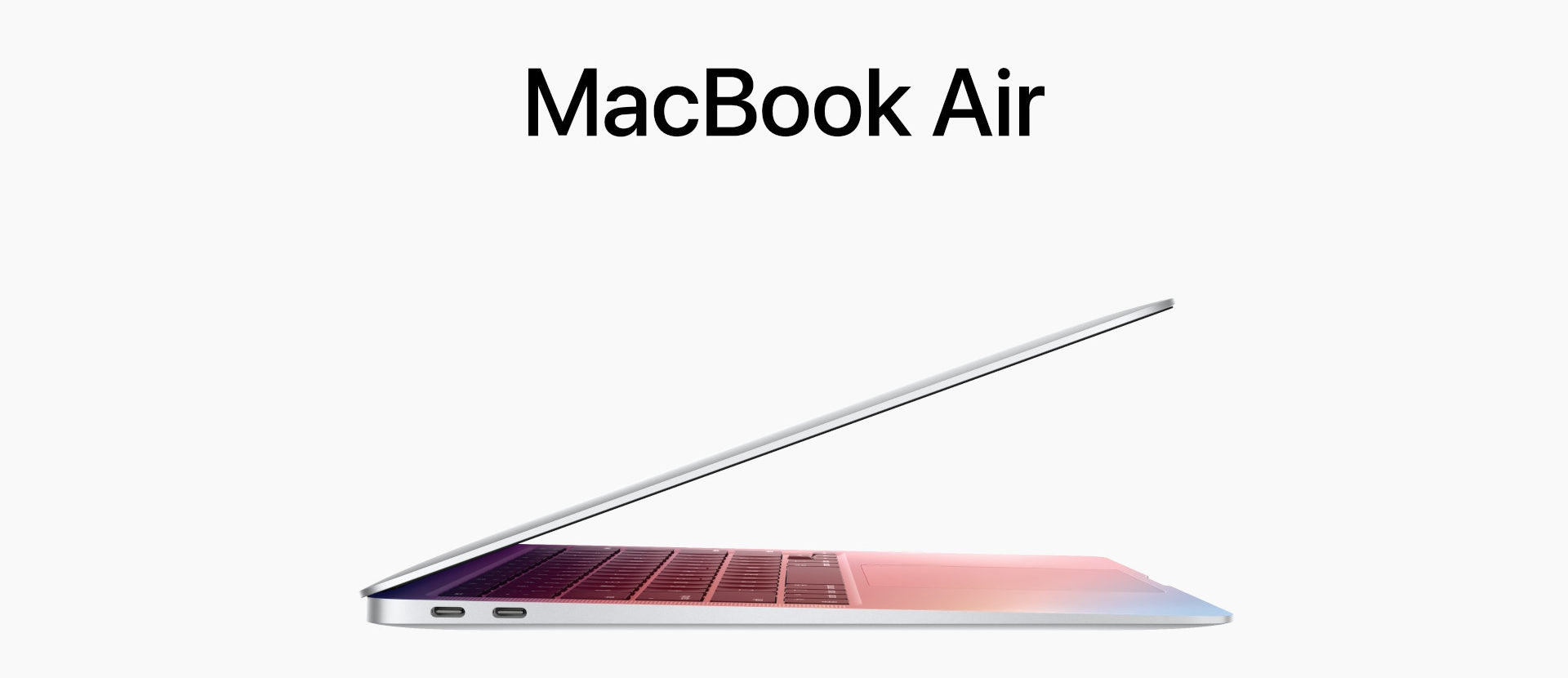
We will find out how tempting the product will be in the end sometime next week. Personally, I expect the first reviews on Tuesday or Wednesday at the latest. In addition to performance as such, it will be very interesting to see how various non-native applications cope with the support of the new SoC. Apple has most likely taken care of the support of the native ones thoroughly, but it is the others whose functioning in practice will show whether the first generation of Apple Silicon Macs is usable for users who require the support of these applications.
- Newly introduced Apple products will be available for purchase in addition to Apple.com, for example at Alge, Mobile Emergency or u iStores

